Nickles, who is a State Department historian, has written what I believe is the first full-length study of this important and intriguing subject. Excluding an introduction and short conclusion, it has seven chapters presented in three parts (‘Control’, ‘Speed’, and ‘The Medium’), each having a chapter devoted to a case study: the Anglo-American crisis of 1812, the further Anglo-American crisis of 1861 (‘the Trent affair’), and the Zimmerman telegram of January 1917 – which of course also involved the United States.
I must admit that I found the plan of the book rather confusing, and there is a certain amount of repetition. Some long sections, for example on nineteenth century diplomatic life and work patterns in Chapter 5, also tend to take a sledge hammer to crack a nut, and have too many quotations for my taste. In addition, there are some odd failings of language, two of them occurring in the opening paragraph of Chapter 3, at which point the attention of the Harvard UP copy editor must have been on something else. (‘In the autumn of 1861, public opinion [morale?] in the northern part of the United States had reached a low ebb. … Foreign exhaltation [exhultation?] at Southern excesses added insult to injury.’) Another weakness is the absence of a Selected Bibliography, with the result that one has to sift the copious footnotes to identify the most important secondary sources. Nevertheless, excepting the first, these are not serious criticisms and should not dissuade those interested in the evolution of diplomatic method over the last two centuries from poring over this book, which is full of interesting facts and suggestive hypotheses.
The result of the introduction of the electric telegraph in the middle of the nineteenth century was that thereafter diplomatic messages were much more quickly received. This is what everyone knows and the point is duly emphasised by Nickles. What is less well known beyond the ranks of the specialists, however, is that ‘cablegrams’ by no means arrived with the speed of light, were hopelessly insecure, and often quite incredibly expensive – especially if they had to be transmitted by submarine cables, as for example between Britain and America and Britain and France. Because of their expense and the need for laborious encoding, messages sent in this manner were also sparser in their language and shorter on information than the older, hand-delivered despatch. For a variety of reasons, which Nickles explains fully, they were also much more often garbled. Nevertheless, suggestive of modernity and exciting events, prestige attached to them. What were the results? Among those to do with diplomacy (as opposed to signals intelligence) two stand out. The first is the declining autonomy of diplomatic envoys in the late nineteenth century. This is the conventional wisdom but Nickles is careful to point out that this varied from state to state, and within the diplomatic services of the same state from envoy to envoy: the limitations of cablegrams, he demonstrates, ‘furnished independently minded diplomats with means to subvert their instructions and maintain their freedom of action’ (p. 31). The second consequence of the attributes of the cablegram, and according to Nickles ‘perhaps most important’, was that while (he hints) it had a benign influence on routine diplomacy, it contributed to ‘the accelerated speed of international crises’. This was serious because ‘[t]he faster pace of diplomatic disputes invited more emotional and less creative decisions on the part of statesmen, while public opinion, which sometimes moderates over the course of a long crisis, often exercised a belligerent influence on shorter crises’ (p. 191). This is inherently plausible and, in light of Nickles’ examples, historically persuasive, though no doubt diplomatic historians will argue furiously over it. I look forward to reading Thomas Otte’s review of this book, which is to be published in the European History Quarterly.
One final point: Nickles describes how the initial astonishment of politicians and journalists at the technical achievement of electric telegraphy led to much naive and ill-considered mid-century speculation that it promised the demise of the diplomatic service altogether. Of course, this did not happen, and prognoses of this sort diminished in the later decades of the nineteenth century (pp. 46-7). It is a pity that this was not recalled in the later years of the twentieth century, when a similar degree of intoxication was produced by jet aircraft and computer communication and produced exactly the same kind of rash predictions.
You may also be interested in
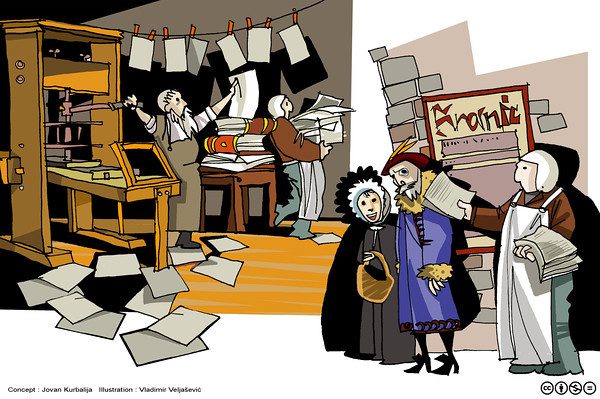
Renaissance Diplomacy and the Reformation
We invite you to continue our walk along timeline of Evolution of diplomacy and technology. In May, our next stop is Renaissance diplomacy and the impact of the invention of the printing press on diplomacy in the Reformation period.

Language and Diplomacy: Preface
Part of Language and Diplomacy (2001): In the preface below, Jovan Kurbalija and Hannah Slavik introduce the chapters in the book, and extract the general themes covered by the various authors.
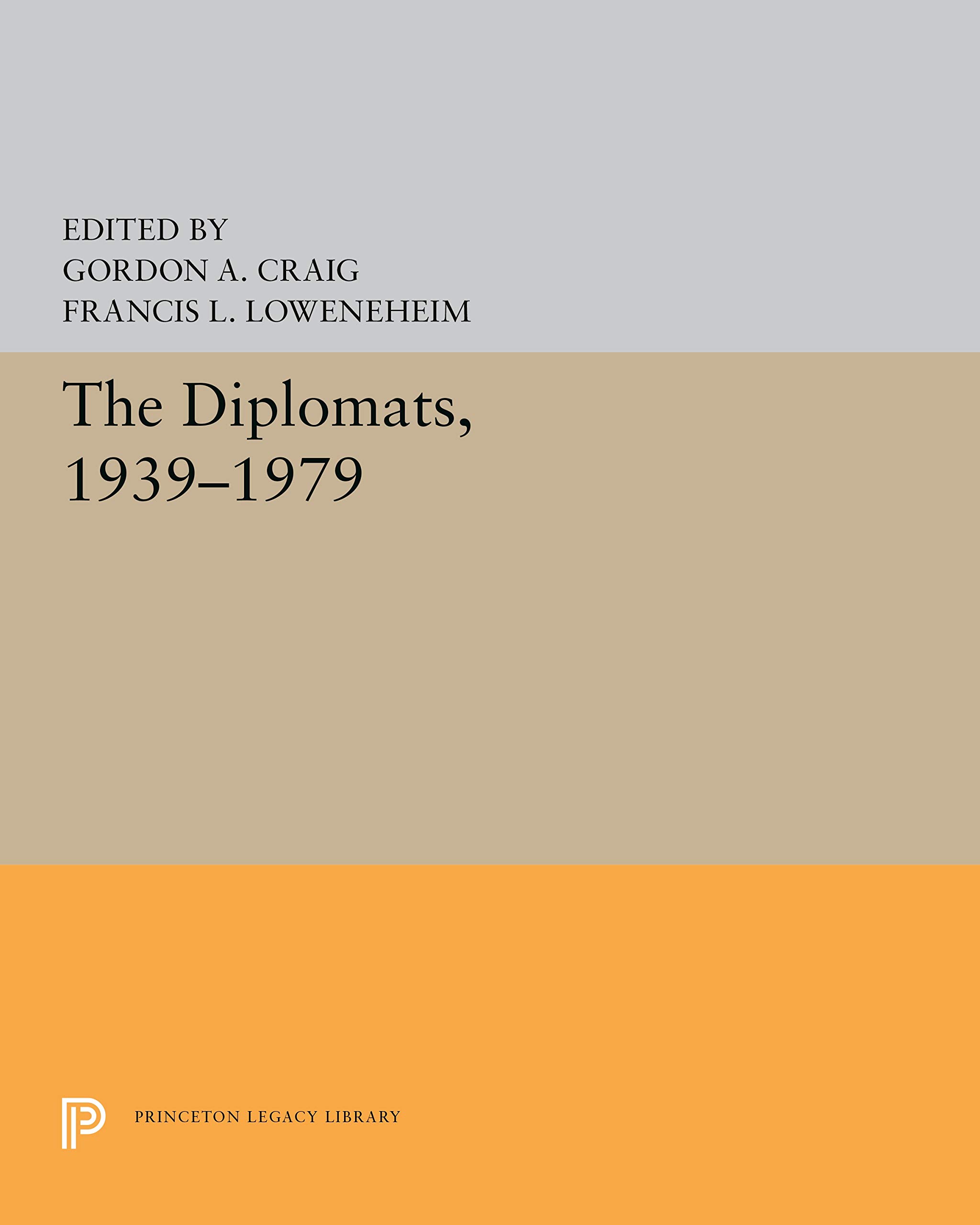
The Diplomats, 1939-1979
The message provides a brief overview of a diplomatic history spanning the years from 1939 to 1979.
Diplomacy and domestic politics: The logic of two-level games
The text discusses the concept of two-level games, which examines how international negotiations are influenced by both domestic and international factors. Diplomats must navigate these complexities to reach agreements that satisfy both international partners and domestic constituencies, balancing the demands of two levels of negotiation.
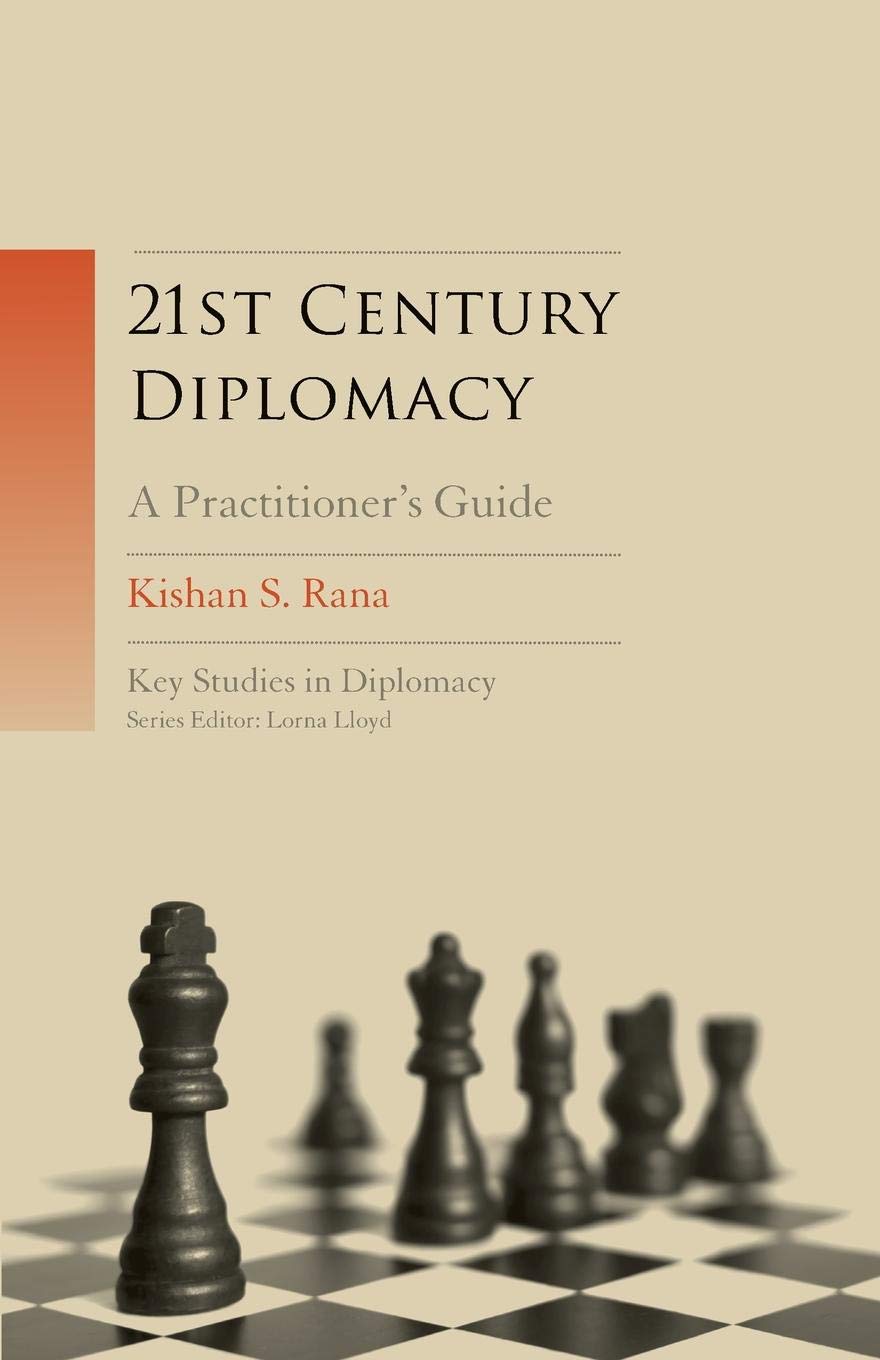
21st Century Diplomacy: A practitioner’s guide
Kishan Rana is a man of lengthy and varied experience in the Indian Foreign Service, ending his career as ambassador to Germany. Since then he has spent many years as a globe-trotting trainer of junior diplomats on behalf of DiploFoundation. Few people, therefore, are as well placed to write a practitioners’ guide to the diplomatic craft; and, insofar as concerns the content of his book, which can be found described here, he has not disappointed.
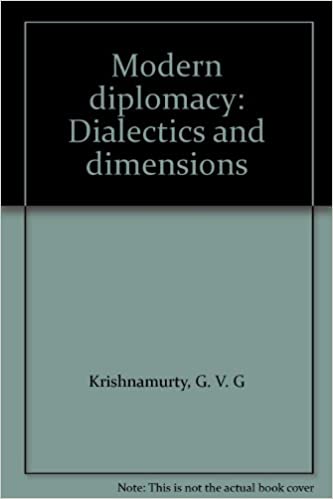
Modern Diplomacy: Dialectics and Dimensions
The message ""Modern Diplomacy: Dialectics and Dimensions"" discusses the intricacies of diplomacy in the contemporary world, examining its complexities and various aspects. It sheds light on the evolving nature of diplomacy, the key role of communication, and the importance of understanding different perspectives and approaches in diplomatic relations. The message delves into the essence of diplomacy in the present-day context, emphasizing the need for adaptability, strategic thinking, and effective communication in navigating the ever-changing international landscape.
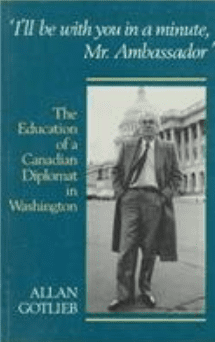
I’ll be with you in a Minute Mr. Ambassador: The Education of a canadian Diplomat in Washington
The message shares insights from the book "I'll be with you in a Minute Mr. Ambassador: The Education of a Canadian Diplomat in Washington.
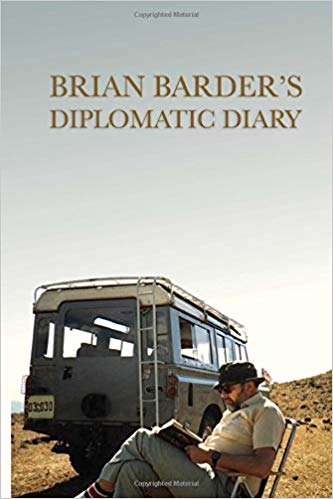
Brian Barder’s Diplomatic Diary
Sir Brian Barder, the senior British diplomat and author of the always sage and sometimes gripping What Diplomats Do, died in 2017 but, courtesy of the professional editorial hand of his daughter Louise, has left us another treat. This is what he called a diary and which for the most part has the form of a diary (dated daily entries), although originally it was a series of letters sent to friends from foreign parts. Compared to diplomatic memoirs, diplomatic diaries are a rarity. And since this one is the product of an acute observer who loved the English language and used it in a vigorous and...
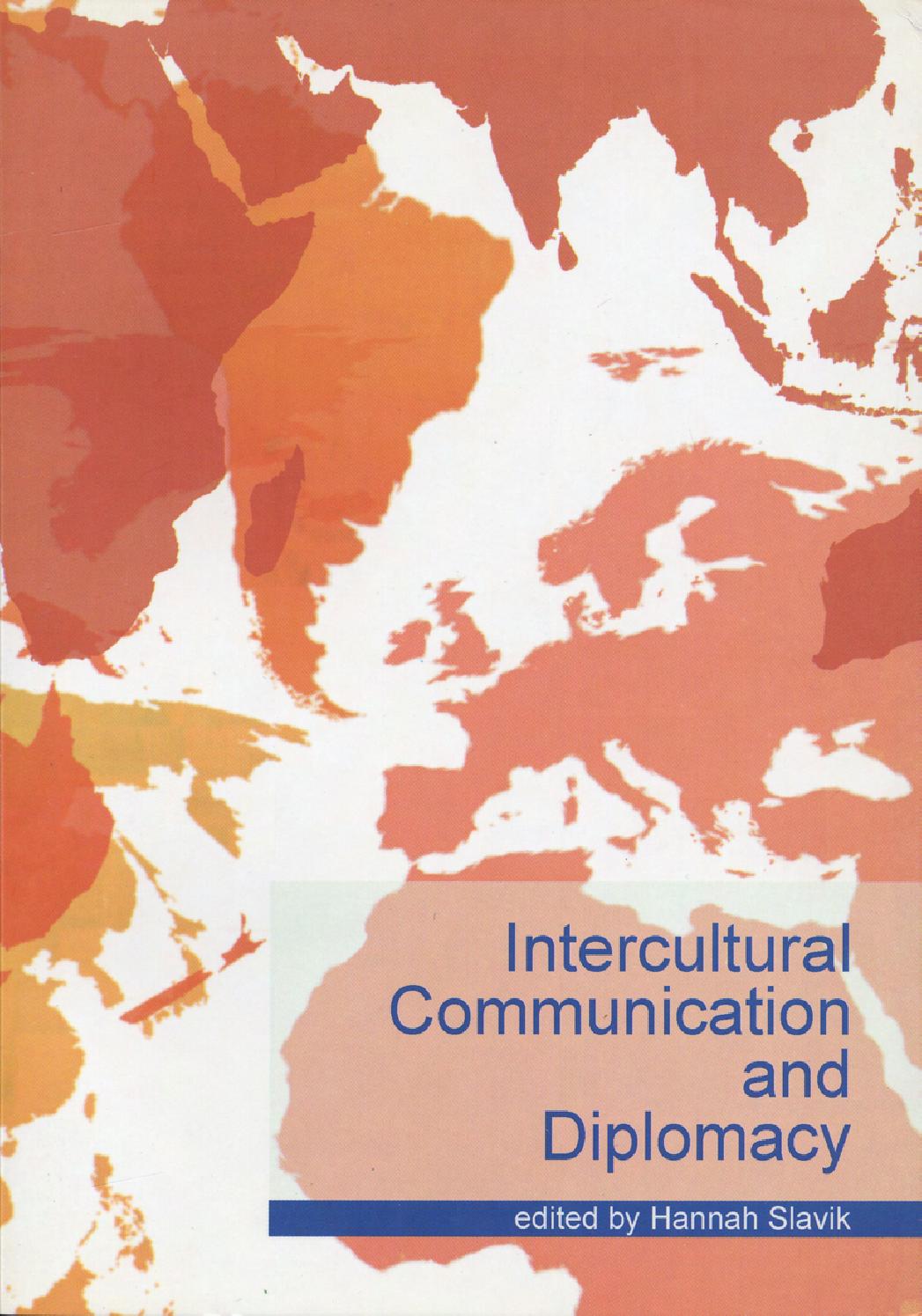
Diplomats as cultural bridge builders
Diplomats are people who are on the fringe somewhere, because they are either permanently living in or at least dealing with alien cultures, cultures with different values. The success of a diplomat depends on this brinkmanship because, on the one hand, they must remain credible with their superiors back home and, on the other hand, they must have access to the leaders in the country where they are posted. This paper discusses the role of diplomats as cultural bridge-builders.
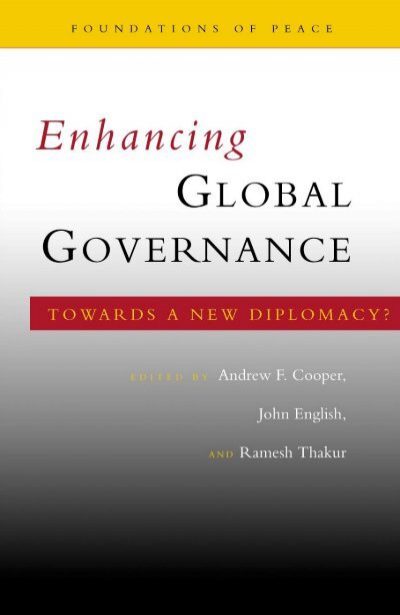
Enhancing Global Governance: Towards a New Diplomacy
The text is about the importance of improving global governance through a new approach to diplomacy.
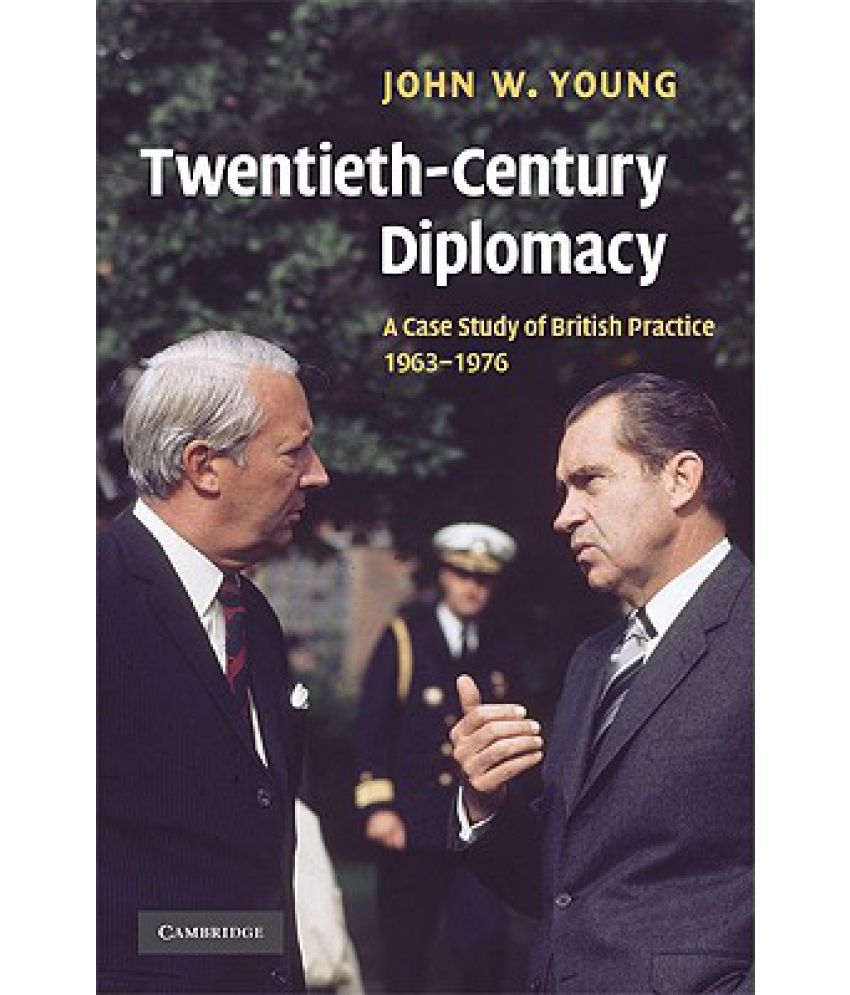
Twentieth-Century Diplomacy: A Case Study of British Practice, 1963-1976
Some years ago, John Young, Professor of International History at the University of Nottingham and long-serving Chair of the British International History Group, turned his thoughts and research in the direction of diplomatic procedure. This is the first monograph to be the product of his shift in direction and it is to be most warmly welcomed. It is original in focus, impeccably researched (private papers and oral history transcripts have been sifted as well official documents in The National Archives), crisply written, and altogether a major contribution to the contemporary history of diplom...
Diplomatic security and the birth of the compound system
The text discusses the importance of diplomatic security and the development of the compound system to enhance safety measures for diplomatic missions.
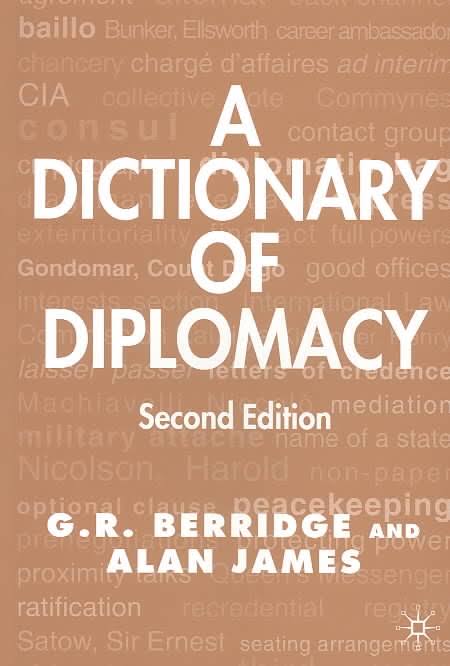
A Dictionary of Diplomacy
Like all professions, diplomacy has spawned its own specialized terminology, and it is this lexicon which provides A Dictionary of Diplomacy's thematic spine. However, the dictionary also includes entries on legal terms, political events, international organizations and major figures who have occupied the diplomatic scene or have written influentially about it over the last half millennium. All students of diplomacy and related subjects and especially junior members of the many diplomatic services of the world will find this book indispensable.
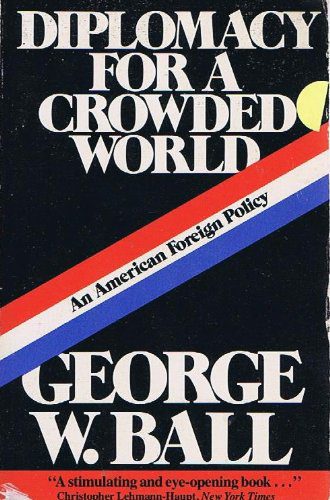
Diplomacy for a Crowded World
The message emphasizes the importance of diplomacy in a world facing increasing population growth and competition for resources. Diplomacy is portrayed as a crucial tool for navigating the complexities of a crowded world, fostering cooperation, and finding peaceful solutions to global challenges.
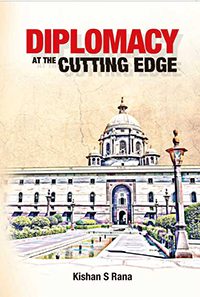
Diplomacy at the Cutting Edge
I started writing a memoire in 1998, but on a long train journey in Germany (Stuttgart to Essen), accompanied by my wonderful wife Mimi, a thought came that it might be much more interesting to write about how the Indian diplomatic system works – or does not really work. That became my first book, Inside Diplomacy (1999). Diplomacy at the Cutting Edge, first published in 2015, is that delayed memoire.
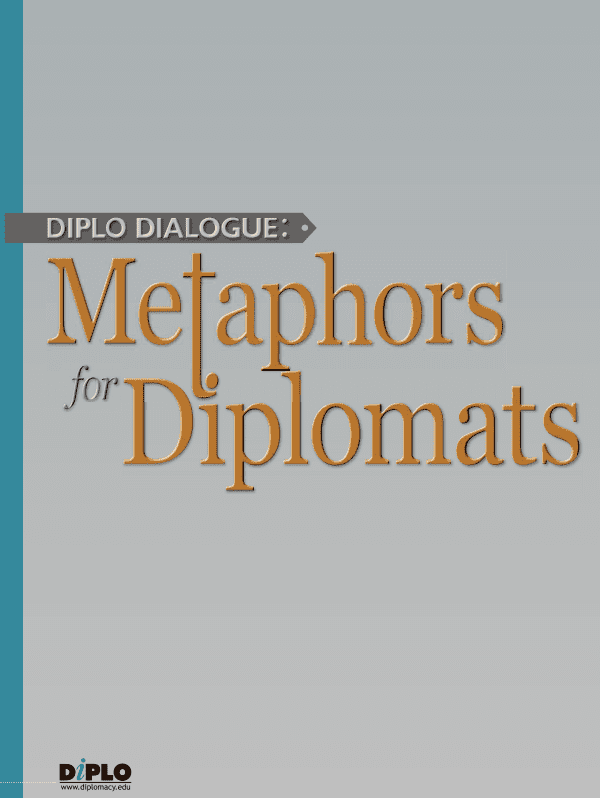
DiploDialogue – Metaphors for Diplomats
On Diplo’s blog, in Diplo’s classrooms, and at Diplo’s events, dialogues stretch over a series of entries, comments, and exchanges and may even linger. DiploDialogue summarises. It’s like in sports events: DiploDialogue aims to bring focus by deleting what, in hindsight, is less relevant. In this first DiploDialogue, Katharina Höne and Aldo Matteucci discuss the usefulness of analogies and metaphors for understanding international relations and diplomacy.
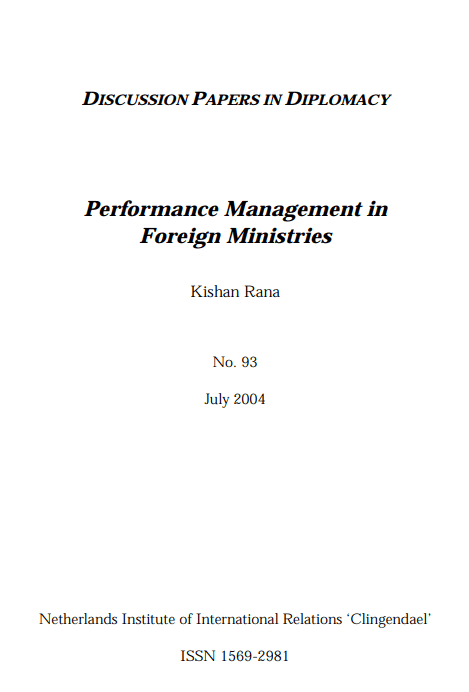
Performance Management in Foreign Ministries: Corporate Techniques in the Diplomatic Service
The text discusses the implementation of corporate performance management techniques within foreign ministries to improve efficiency and effectiveness in diplomatic services.
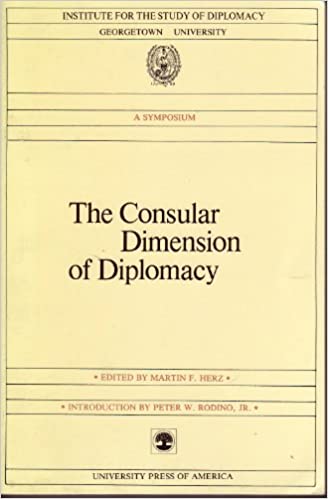
The Consular Dimension of Diplomacy
The Consular Dimension of Diplomacy discusses the crucial role consular officials play in protecting the interests of their respective countries and citizens abroad. Consular work includes providing assistance to citizens in distress, issuing visas, promoting trade and cultural exchanges, and handling legal matters. This aspect of diplomacy is often overlooked but is vital in maintaining relationships and safeguarding the welfare of citizens outside their home countries.
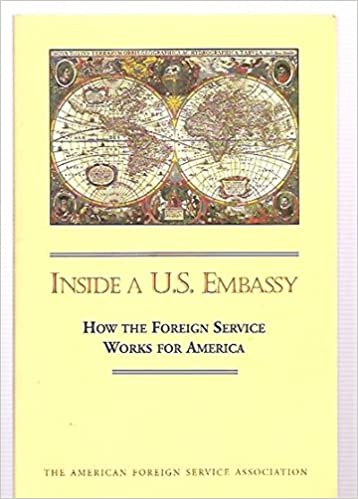
Inside the U.S. Embassy: How the Foreign Service Works for America
The U.S. Embassy and Foreign Service play essential roles in representing America's interests abroad and fostering diplomacy. The Foreign Service officers work diligently to promote American values, protect U.S. citizens, and advance global partnerships. Through collaboration with local governments and international organizations, they address complex challenges and work towards peaceful resolutions. The embassy serves as a hub for diplomatic efforts, supporting American citizens, businesses, and promoting cultural exchange. The Foreign Service's commitment to diplomacy, security, and humanita...
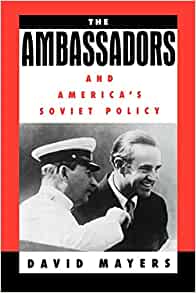
The Ambassadors and America’s Soviet Policy
The Ambassadors and America's Soviet Policy discusses the roles of three prominent American ambassadors in shaping U.S. policy towards the Soviet Union during the early Cold War period. These diplomats employed various strategies to navigate the complexities of Soviet-American relations, including engaging in diplomacy, intelligence gathering, and negotiation. Overall, their efforts helped influence U.S. foreign policy towards the Soviet Union and contributed to the eventual end of the Cold War.
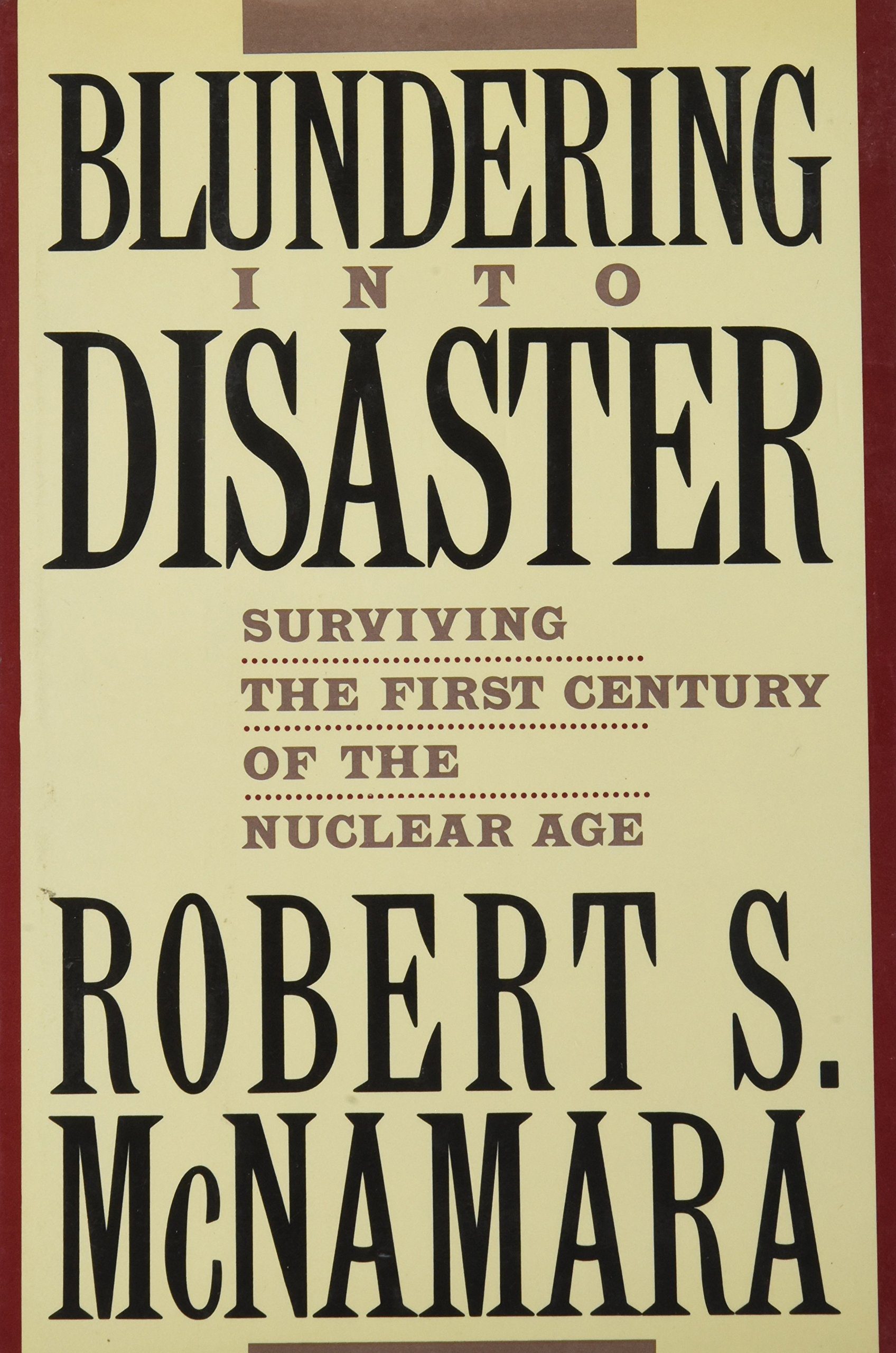
Blundering Into Disaster: Surviving the First Century of the Nuclear Age
Blundering Into Disaster: Surviving the First Century of the Nuclear Age" discusses the history of nuclear weapons, their impact on global politics, and the potential threats they pose to humanity. The book explores past nuclear incidents and the dangers of accidental nuclear conflict, emphasizing the need for responsible decision-making to prevent catastrophic outcomes.
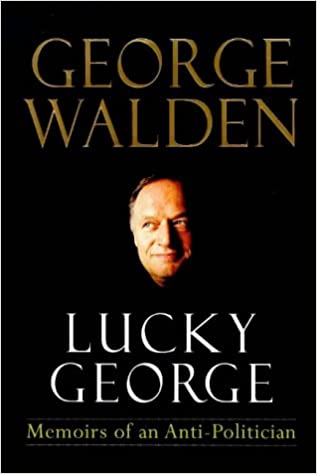
Lucky George: Memoirs of an Anti-Politician
This is a belated and less than comprehensive note on this book, which I stumbled upon in a second-hand bookshop while on holiday. It is one of the most lively, shrewd, and brilliantly written diplomatic and political memoirs that I have ever come across.
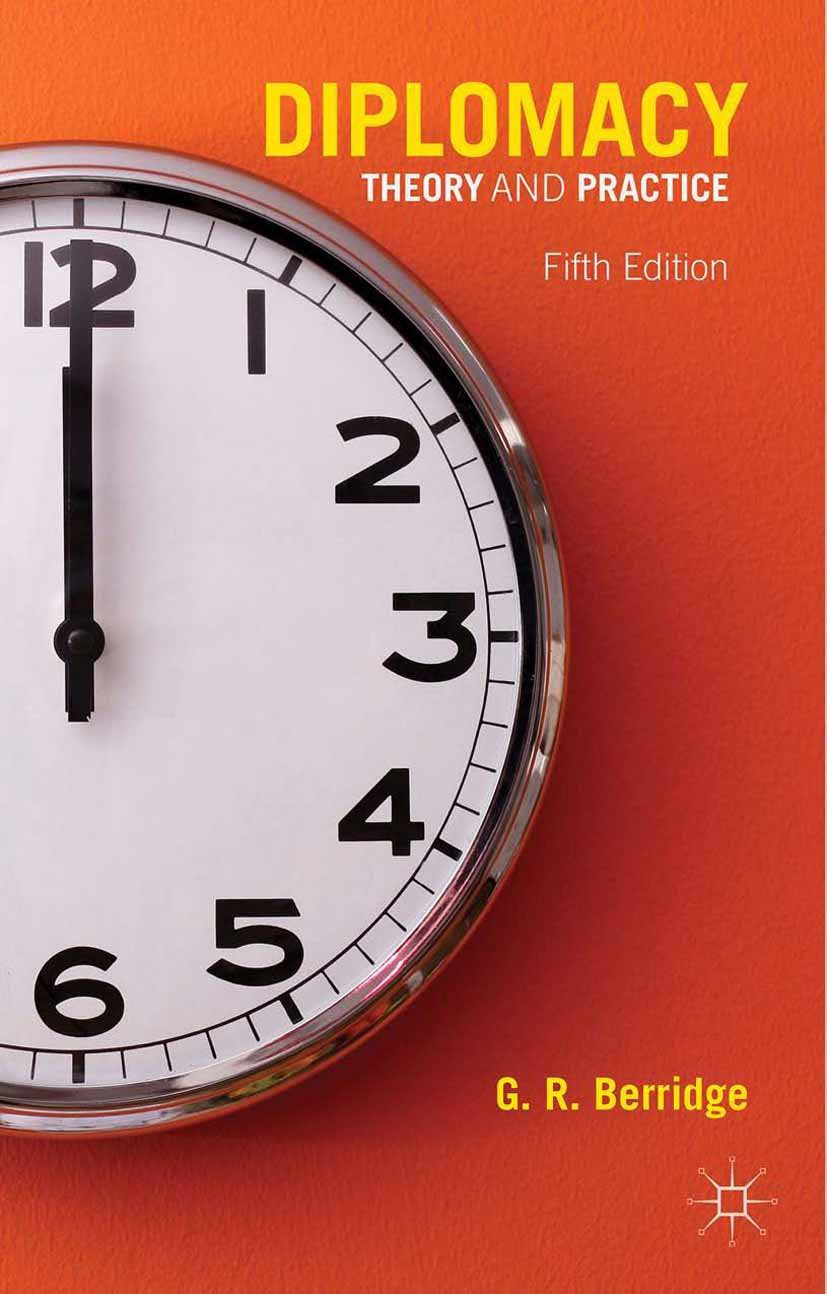
Diplomacy: Theory and Practice, Fifth Edition
In 2005, I reviewed the third edition of Diplomacy: Theory and Practice by G.R. Berridge as essential reading for Robinson Crusoe, had he been a student of diplomacy. We all know that eventually Crusoe ended his assignment on the foreign island and returned to his native country where he found himself a wealthy man for whom bibliography no longer had a role to play … unlike the rest of us, who have continued to practise diplomacy and read books about it.
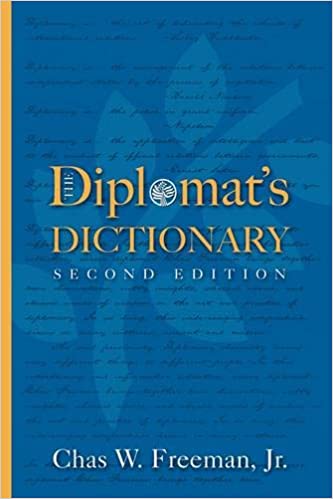
Diplomat’s Dictionary
The Diplomat's Dictionary offers essential insights on diplomatic language and practices, guiding diplomats to navigate international relations effectively. The dictionary covers a wide range of topics, aiding diplomats in communication and negotiation strategies.

Applying the pedagogy of positiveness to diplomatic communication
Part of Language and Diplomacy (2001): Dr Francisco Gomes de Matos applies what he calls the "Pedagogy of Positiveness" to diplomatic communication. He proposes a checklist of tips for diplomats to make their communication more positive, emphasising respect and understanding of the other side, and keeping in mind the ultimate goal of avoiding conflict.
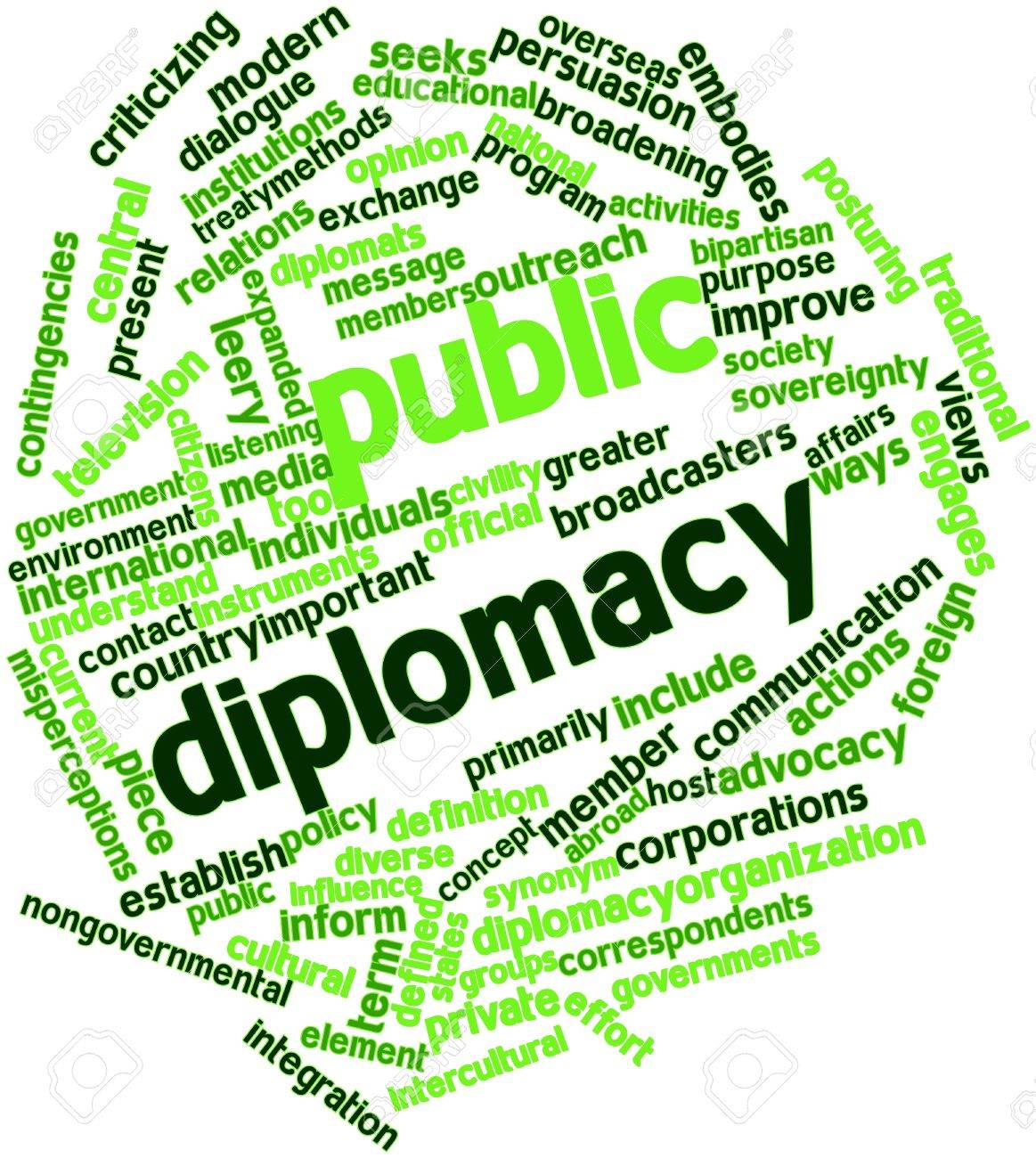
Public diplomacy: Taxonomies and histories
The text discusses public diplomacy, providing taxonomies and historical perspectives.
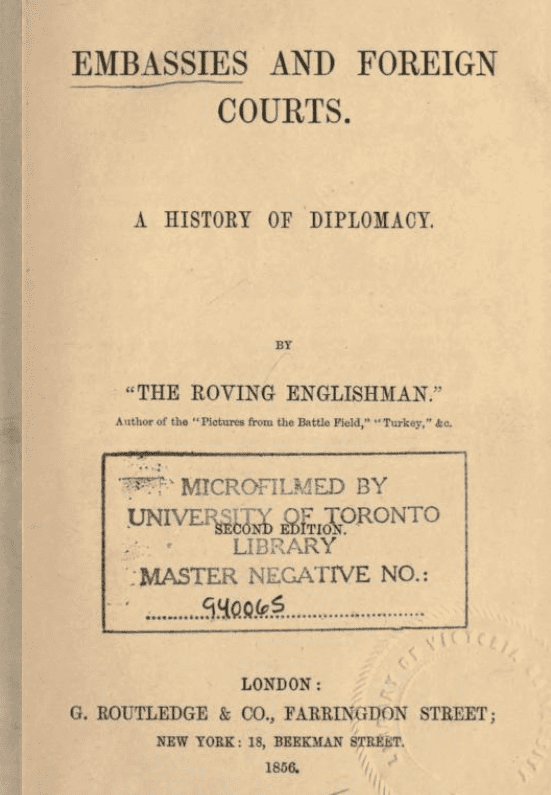
Embassies and Foreign Courts
The text explores the role and functioning of diplomatic missions and interactions between foreign powers, offering insights into the complexities and nuances of international relations during the time it was written.

Embassies under Siege
The article discusses recent attacks on embassies around the world, highlighting the increasing frequency of such incidents and the challenges faced by diplomats in maintaining security. Diplomatic missions have become targets for various groups due to political tensions and conflicts, putting staff and facilities at risk. Governments are working to enhance security measures and protect their embassies in response to these threats.
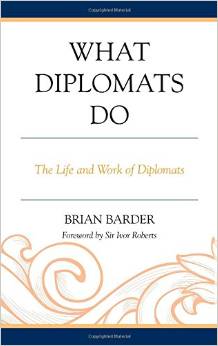
What Diplomats Do: The Life and Work of Diplomats
Sir Brian Barder’s book What Diplomats Do offers comprehensive insight into the life and work of diplomats. It deserves to be read by practitioners and aspiring practitioners of diplomacy, by students and teachers of diplomacy, and by anyone interested in what diplomats actually do. It crosses genres as easily as it addresses and holds the attention of a broad audience.

American Negotiating Behaviour: Wheeler-Dealers, Legal Eagles, Bullies, and Preachers
The text discusses various negotiating behaviors commonly observed in Americans, categorizing them as wheeler-dealers, legal eagles, bullies, and preachers.
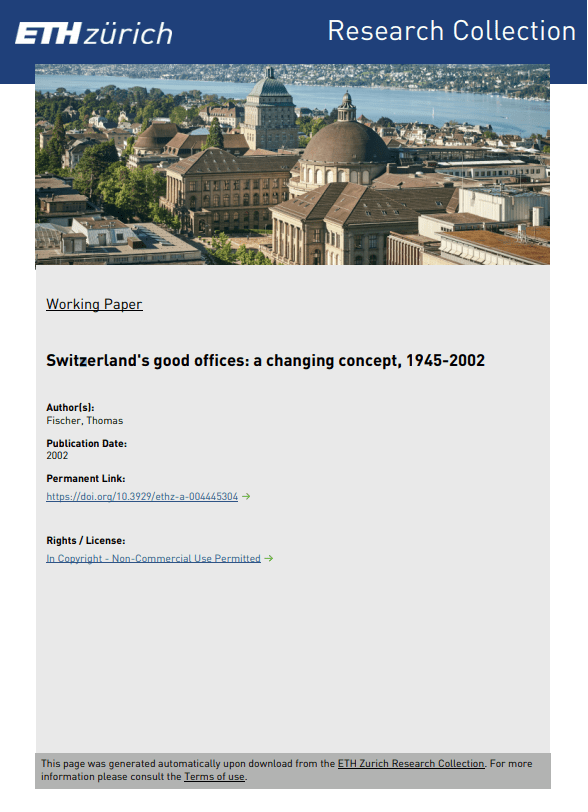
Switzerland’s good offices: a changing concept, 1945-2002
Switzerland's role in international diplomacy evolved from the end of World War II to 2002, showcasing its changing concept of good offices.

Reflections on Persuasion in Diplomacy by Ambassador Joseph Cassar
In our families, in our jobs, in our political dynamic at a national level, we always try to persuade others, first and foremost. Since, diplomacy is part of the global human existence, it is natural that persuasion is an essential part and an essential tool of diplomacy … as much it is in your family life, in my family life, when you try to sort out trouble within your family, between your brothers and sisters, between your children and between your grandchildren at my age.
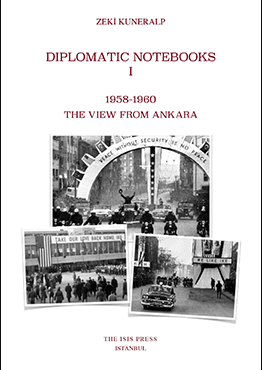
Just a Diplomat
Close students of the new, Conservative Party Mayor of London, the at once engaging and alarming Boris Johnson, will know that he has Turkish cousins. One of these is Sinan Kuneralp, a son of the late Zeki Kuneralp, probably the most distinguished and well liked Turkish diplomat of his generation. Sinan Kuneralp is a scholar-publisher and runs The Isis Press in Istanbul, a house at the forefront of publishing scholarly works and original documents on the Ottoman Empire, chiefly in English and French. The three works noticed here are all its products and reflect the publisher’s own special in...
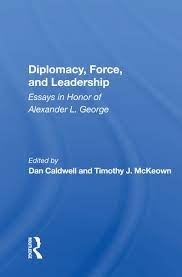
Diplomacy, Force & Leadership: Essays In Honor of Alexander L. George
The book "Diplomacy, Force & Leadership: Essays In Honor of Alexander L. George" is a collection of essays paying tribute to George's legacy in the field of international relations and national security studies. The essays focus on his work related to diplomacy, the use of force, and leadership in various contexts, showcasing the impact he had on shaping these areas of study.

Guerrilla Diplomacy: Rethinking International Relations
In a previous book review for DiploFoundation, Petru Dumitriu described G. R. Berridge’s Diplomacy: Theory and Practice as 'a Robinson Crusoe’s book on diplomacy'. Suppose one is left on a deserted island and allowed only one book to study diplomacy; in that case, Dumitriu recommends Diplomacy: Theory and Practice. Without doubt, I wholeheartedly support this recommendation.

The idea of diplomatic culture and its sources
To what extent does an independent diplomatic culture exist which permits diplomats to exert their own influence on the conduct of international relations? Insofar as such a culture exists, what does it look like, is it a good thing and, if it is, how is it to be sustained? This paper explores what we generally mean when we talk about culture and how we see culture operating in contemporary international relations. It sketches the basic elements of a diplomatic culture and discusses different accounts of its origins.
Diplomacy by other means
Diplomacy by other means
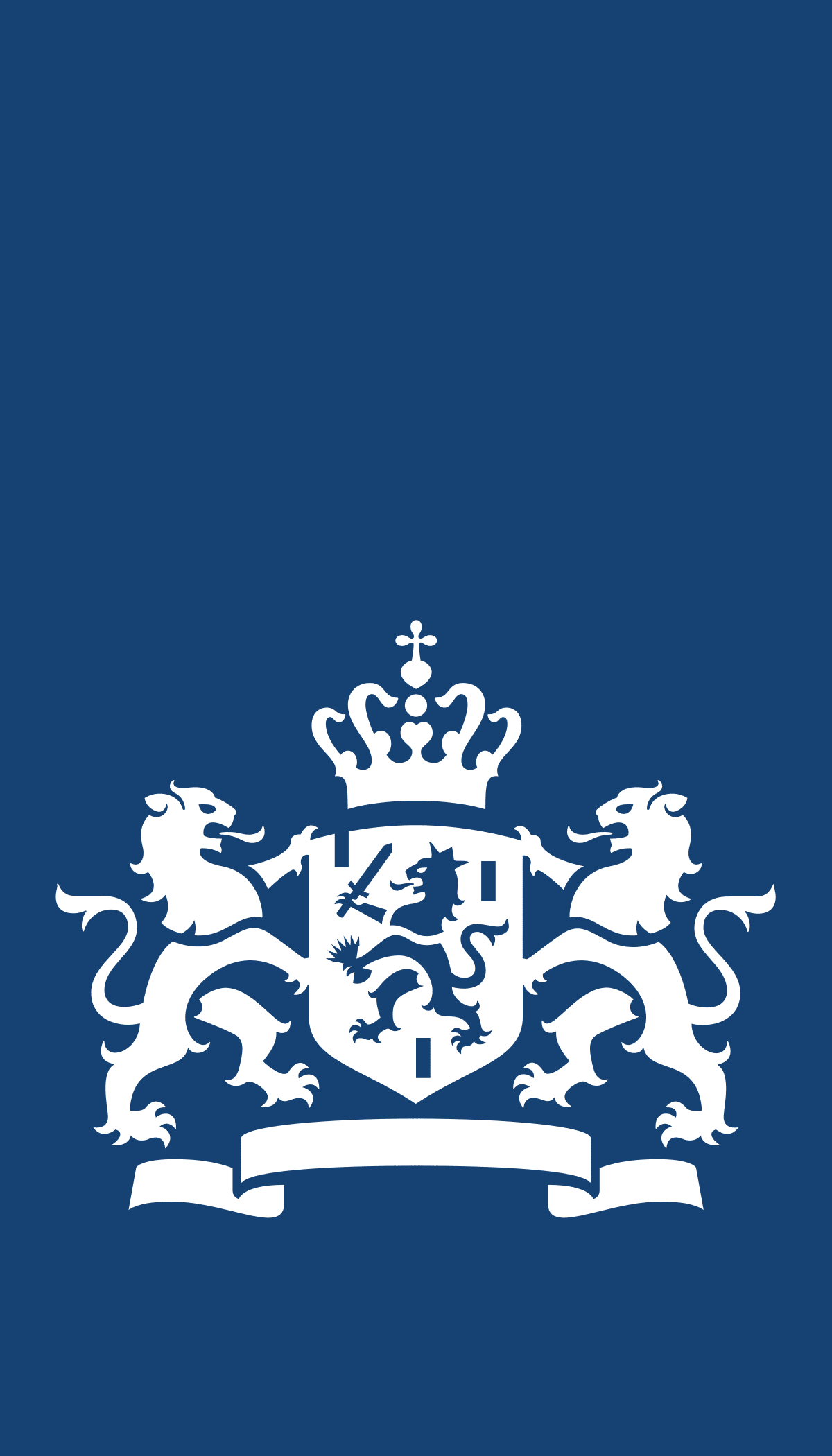
Reforming Diplomacy: Clear Choices, New Emphases
The text discusses the need for reform in diplomacy, emphasizing clear choices and new focal points.
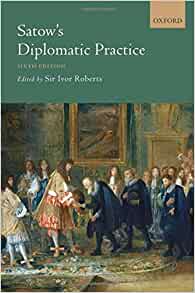
Satow’s Diplomatic Practice, 6th ed
Satow's Diplomatic Practice, 6th ed., is a vital resource for diplomats with updated information on diplomacy history, diplomatic and international law, and the effect of modern changes on diplomatic work, including terrorism. This edition covers the evolution of diplomacy since the Cold War, the rise of new diplomatic practices, and the increased number of states and international organizations. The book details diplomatic privileges, missions, and consular matters, making it essential for those involved in diplomacy.
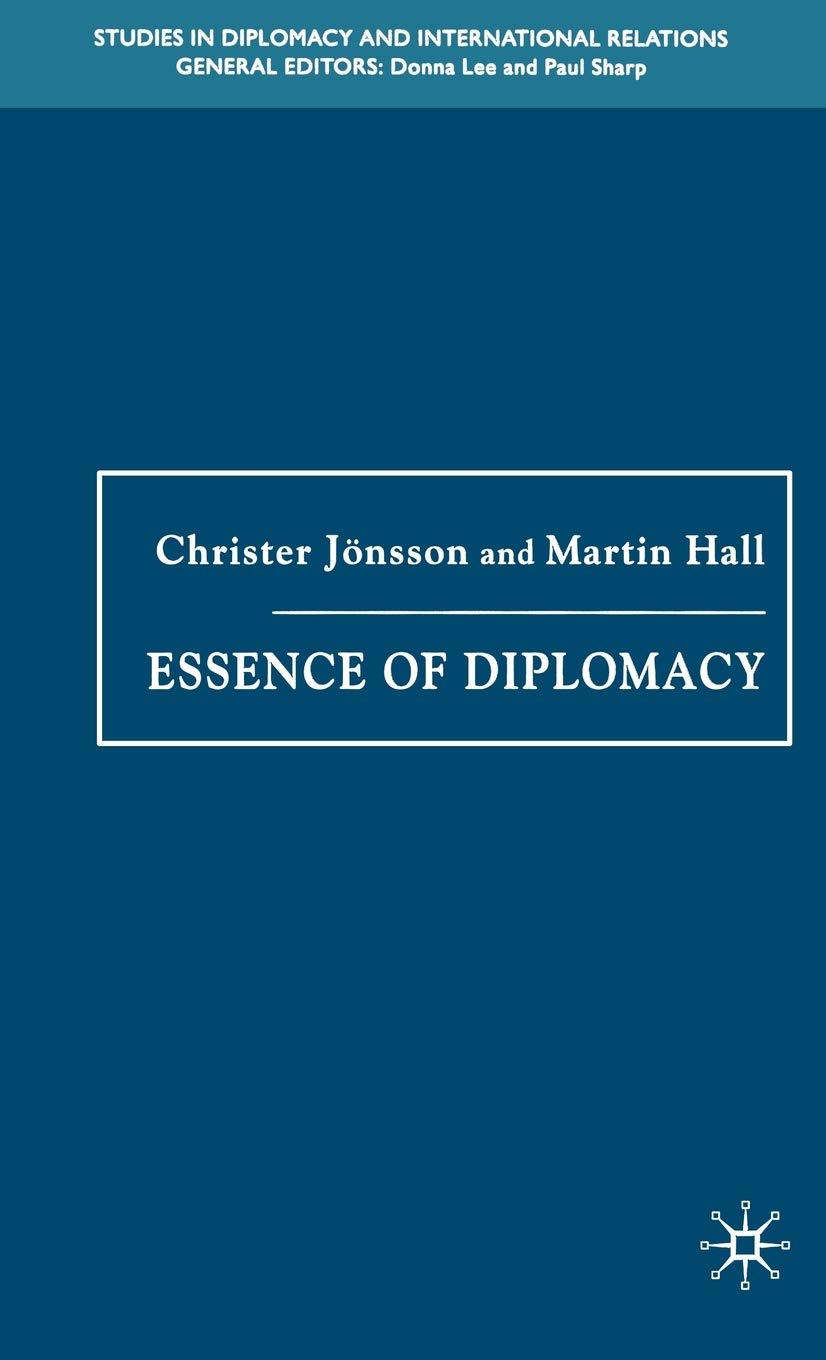
Essence of Diplomacy
Christer Jönsson is Professor of Political Science at Lund University in Sweden, where Martin Hall is a Researcher. Their book is described as an exercise in ‘theorizing’ diplomacy, that is, an attempt to provide a general account of its causes and consequences. (The authors are thus severe in denying the title of ‘theory’ to the ‘prescriptive tracts’ which scholar-diplomats have written about their art over hundreds of years, though I notice that they are more indulgent to the use of the term ‘political theory’ as in, for example, ‘liberal political theory’.)
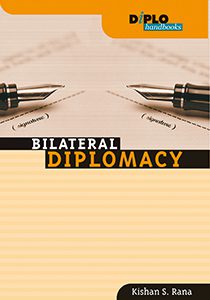
Bilateral Diplomacy
Bilateral Diplomacy is the first of the DiploHandbooks, a new series on practical diplomacy. The book breaks new ground in the role ascribed to bilateral diplomacy, and its importance in international affairs today. It also covers the de facto “empowerment” of the embassy that flows from its new responsibility for relationship management.

Bertie of Thame: Edwardian Ambassador
Explore the life of Bertie of Thame, an Edwardian ambassador, to gain insights into his diplomatic achievements and the impact he had on international relations during his time.
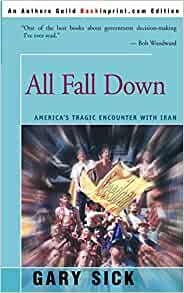
All Fall Down: America’s fateful encounter with Iran
All Fall Down is the definitive chronicle of Americas experience with the Iranian revolution and the hostage crisis of 1978-81. Drawing on internal government documents, it recounts the controversies, decisions and uncertainties that made this a unique chapter in modern American history. From his personal experiences, the author draws revealing portraits of the people who engaged in this test of wills with an Islamic revolutionary regime.
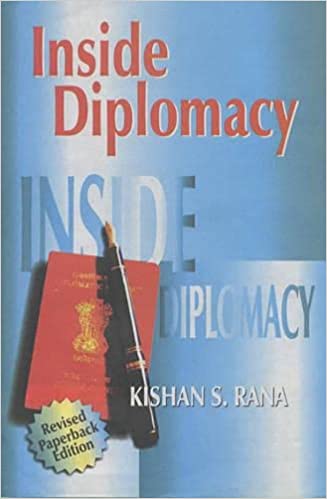
Inside Diplomacy
This is a book on diplomacy in general and the Indian Foreign Service (IFS) in particular. It is also a gem, and a large gem. It breathes life, wisdom, and good humour, and is full of rich detail. I found it thoroughly absorbing. Students of diplomacy at all stages of their careers will find it immensely useful, while those in a position to influence the future shape of the IFS will discover a whole raft of constructive suggestions for reform fearlessly advanced.
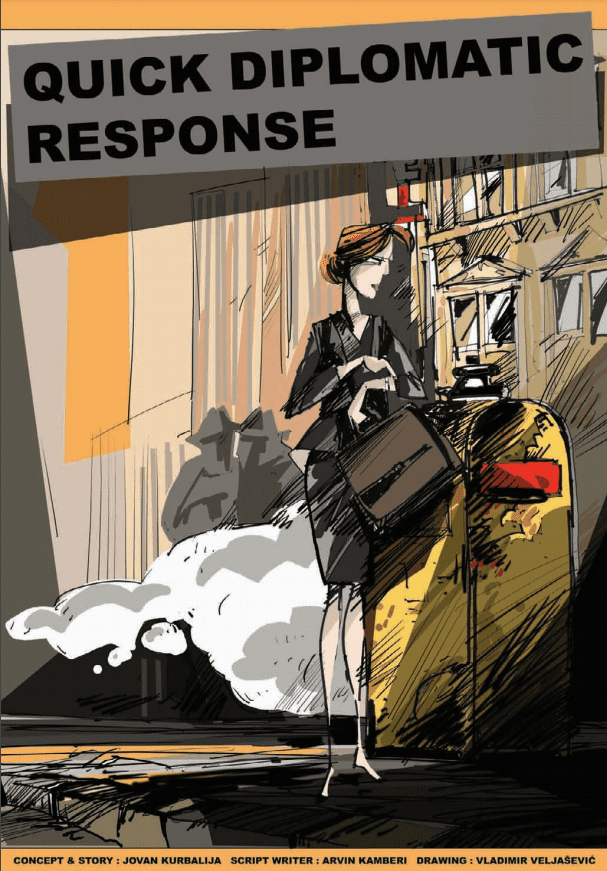
Quick Diplomatic Response
In the increasingly interdependent world, diplomacy is our only alternative. Wars do not provide solutions for modern problems, whether these are regional crises, environmental challenges, such as climate change, or the risk of global pandemics. Compromise and consensus are not only the most ethical approach, but necessity. This interesting comic presents one day in life of an e-diplomat.
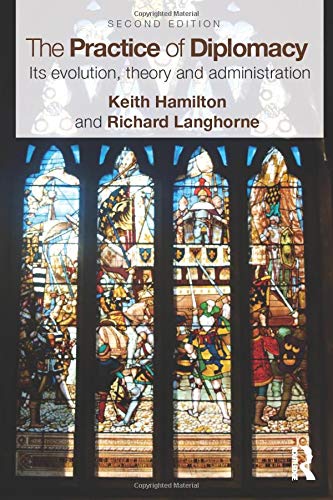
The Practice of Diplomacy: Its evolution, theory and administration
First published in 1995, the long-awaited second edition of this valuable textbook on the history of diplomacy has at last appeared. The first chapter has been expanded to include non-European traditions, and a wholly new chapter has been added to take account of developments over the last 15 years. It is for the main part a work of relaxed authority, clearly written, and – unusually for an introductory work – full of intriguing detail which it would be difficult if not impossible to find in other secondary sources.
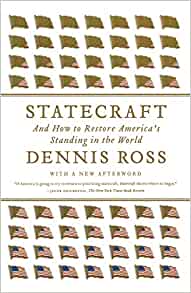
Statecraft
The essence of effective statecraft lies in the ability to navigate complex political landscapes with skill and insight. A proficient statesman must possess a keen understanding of power dynamics, diplomacy, and strategy to achieve their goals. By mastering the art of statecraft, leaders can successfully steer their nations through challenges and conflicts, securing their interests and promoting stability and prosperity.
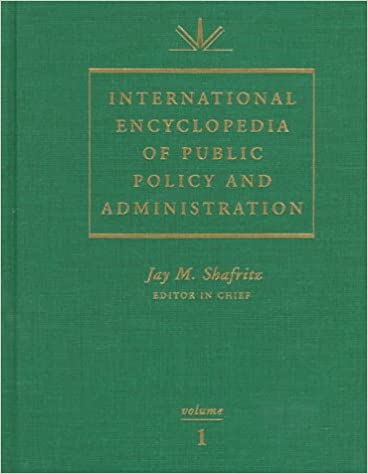
International Encyclopedia Of Public Policy And Administration
Public administration - the implementation side of government - is becoming an increasingly international discipline.
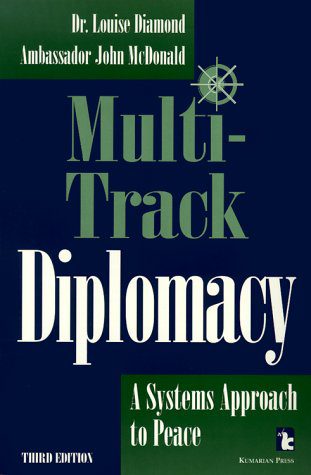
Multi-Track Diplomacy: A systems approach to peace
Multi-Track Diplomacy" outlines a holistic approach to resolving conflicts through the involvement of multiple sectors in society, including government, business, and civil society. By recognizing the interconnectedness of these sectors and their influence on peacebuilding efforts, this systems approach aims to create sustainable and effective solutions to complex issues.
The Limits of Neorealism
The Limits of Neorealism
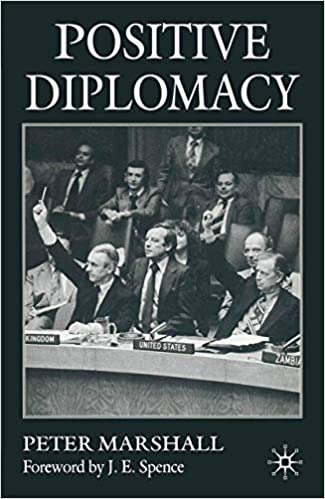
Positive Diplomacy
The message details how positive diplomacy serves as an effective tool in building relationships and resolving conflicts between nations. It emphasizes the importance of mutual respect, cooperation, and understanding in diplomatic interactions for achieving peaceful resolutions and fostering international cooperation. Using positive communication and dialogue, countries can work together to address common challenges and build a more stable and prosperous global community.
The School for Ambassadors
The School for Ambassadors" is a fictional story about a school that trains individuals to become diplomats and navigate international relations. The main character, Simona, faces challenges and grows through her experiences, learning valuable lessons about diplomacy and personal growth. The story highlights the importance of communication, cultural awareness, and adapting to new environments in the field of diplomacy.
Preventive Diplomacy in Southeast Asia: Redefining the ASEAN Way
Preventive Diplomacy in Southeast Asia: Redefining the ASEAN Way" discusses how ASEAN can enhance preventive diplomacy to address conflicts and maintain stability in the region. It emphasizes the need for early intervention, building trust among member states, and utilizing a regional approach to prevent conflicts before they escalate. The author advocates for a proactive and inclusive approach to diplomacy to uphold peace and security in Southeast Asia.

The Professional Diplomat
The message provides guidance and advice on professionalism and diplomacy in interpersonal interactions. It emphasizes the importance of maintaining composure, being respectful, and considering others' perspectives in order to navigate social situations effectively.
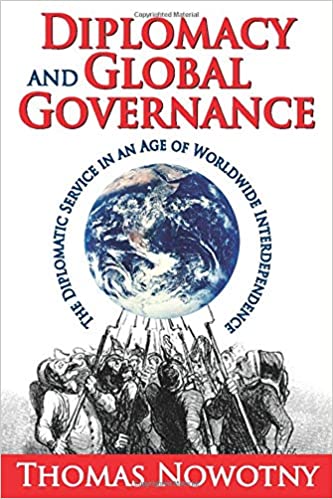
Diplomacy and Global Governance: The Diplomatic Service in an Age of Worldwide Interdependence
The text discusses the role of the diplomatic service in a time of global interdependence. Diplomacy plays a crucial role in ensuring cooperation and effective governance on a global scale, emphasizing the need for diplomatic efforts in maintaining peace and fostering international relations.
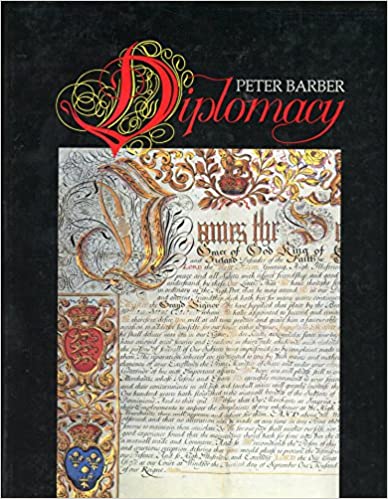
Diplomacy: The world of the honest spy
In a world of diplomacy, honesty is key even for spies.

Cursed is the Peacemaker: The American Diplomat [Philip Habib] Versus the Israeli General, Beirut 1982
The text discusses the tense situation between American diplomat Philip Habib and Israeli General in Beirut in 1982.

The Contemporary Embassy: Paths to Diplomatic Excellence
The Contemporary Embassy: Paths to Diplomatic Excellence" explores the evolving role of embassies in modern diplomacy, focusing on the diverse strategies and practices that contribute to diplomatic success.
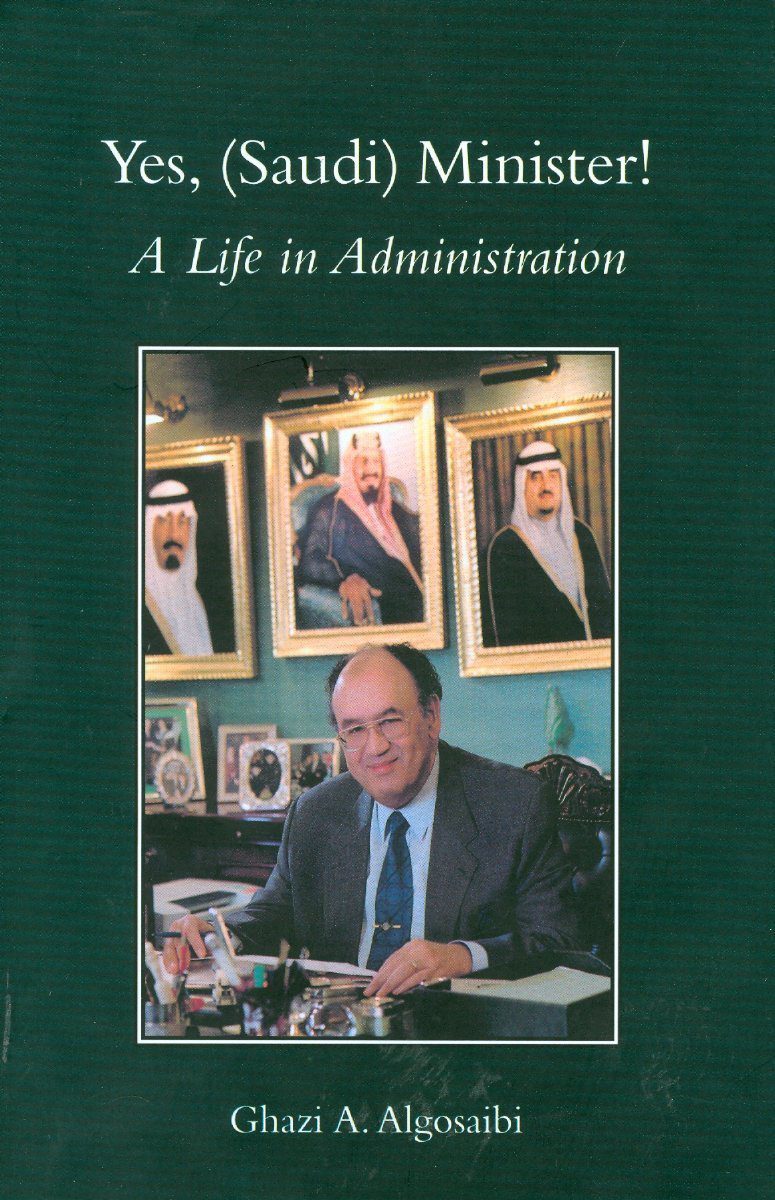
Yes, (Saudi) Minister! A Life in Administration
After a brilliant ministerial career in Riyadh, Algosaibi fell from grace at the Ministry of Health in 1984. This was the start of his diplomatic life, which commenced in Bahrain and continued in London. This is a shrewd and lively book.

DC Confidential: The controversial memoirs of Britain’s ambassador to the U.S. at the time of 9/11 and the Iraq War
DC Confidential: The controversial memoirs of Britain's ambassador to the U.S. at the time of 9/11 and the Iraq War.
The Visa Dimension of Diplomacy
The text provides an overview of how visas play a crucial role in diplomatic relations between countries. It discusses the importance of visa policies in shaping international interactions, fostering bilateral relationships, and promoting various diplomatic objectives. The article emphasizes the significance of understanding the visa dimension in diplomacy for effective communication and cooperation between nations. Overall Summary: The text explores the essential role visas play in diplomatic relations, highlighting their significance in shaping international interactions and fostering bilate...
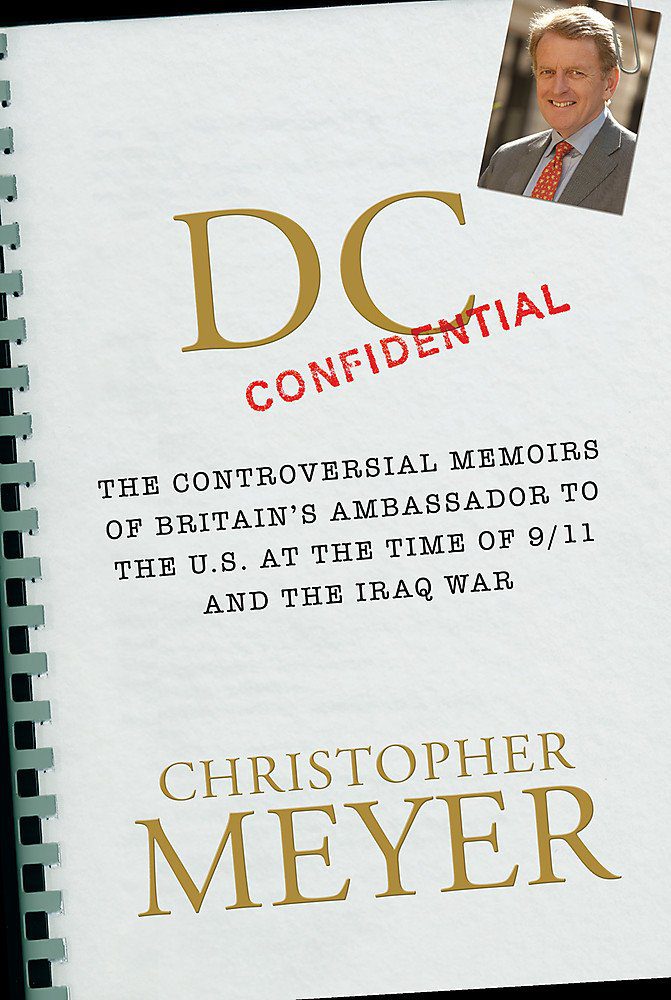
DC Confidential: The controversial memoirs of Britain’s ambassador to the U.S. at the time of 9/11 and the Iraq War
The publication of these memoirs in autumn 2005 caused a public furore in Britain so I shall not waste time giving any background on Sir Christopher Meyer. (Just punch his name into Google, which will enable you in the blink of an eye even to find out from the BBC website which records he chose when he appeared on Desert Island Discs.)
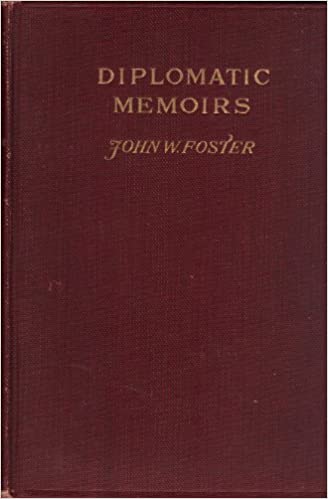
A Selection of New diplomatic memoirs
I have just written a review article on these six books of British diplomatic memoirs for the English Historical Journal, so here I shall just provide some notes on those that I believe to be most valuable to students of diplomacy.
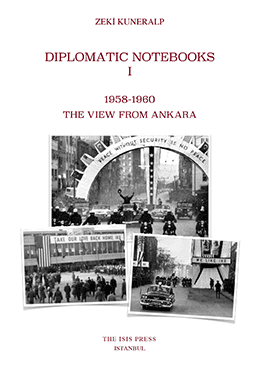
Diplomatic Notebooks 1, 1958-1960: The view from Ankara
Zeki Kuneralp (1914-1998) was one of Turkey’s most gifted, well-liked and influential diplomats of the second half of the twentieth century. This book, dispassionately edited, introduced and annotated by his son, the scholar-publisher Sinan Kuneralp, is the first of a promised series of six volumes. Beginning in January 1958 and ending in August 1960, when Zeki Kuneralp became ambassador to Switzerland, it covers all but the first seven or eight months of the period when he was assistant secretary-general for political affairs in the Turkish foreign ministry in Ankara (in May 1960 he was ele...

Japanese middle-power diplomacy
In the realm of international relations, Japan engages in middle-power diplomacy, showcasing its influence and capabilities while fostering beneficial relationships on the global stage.
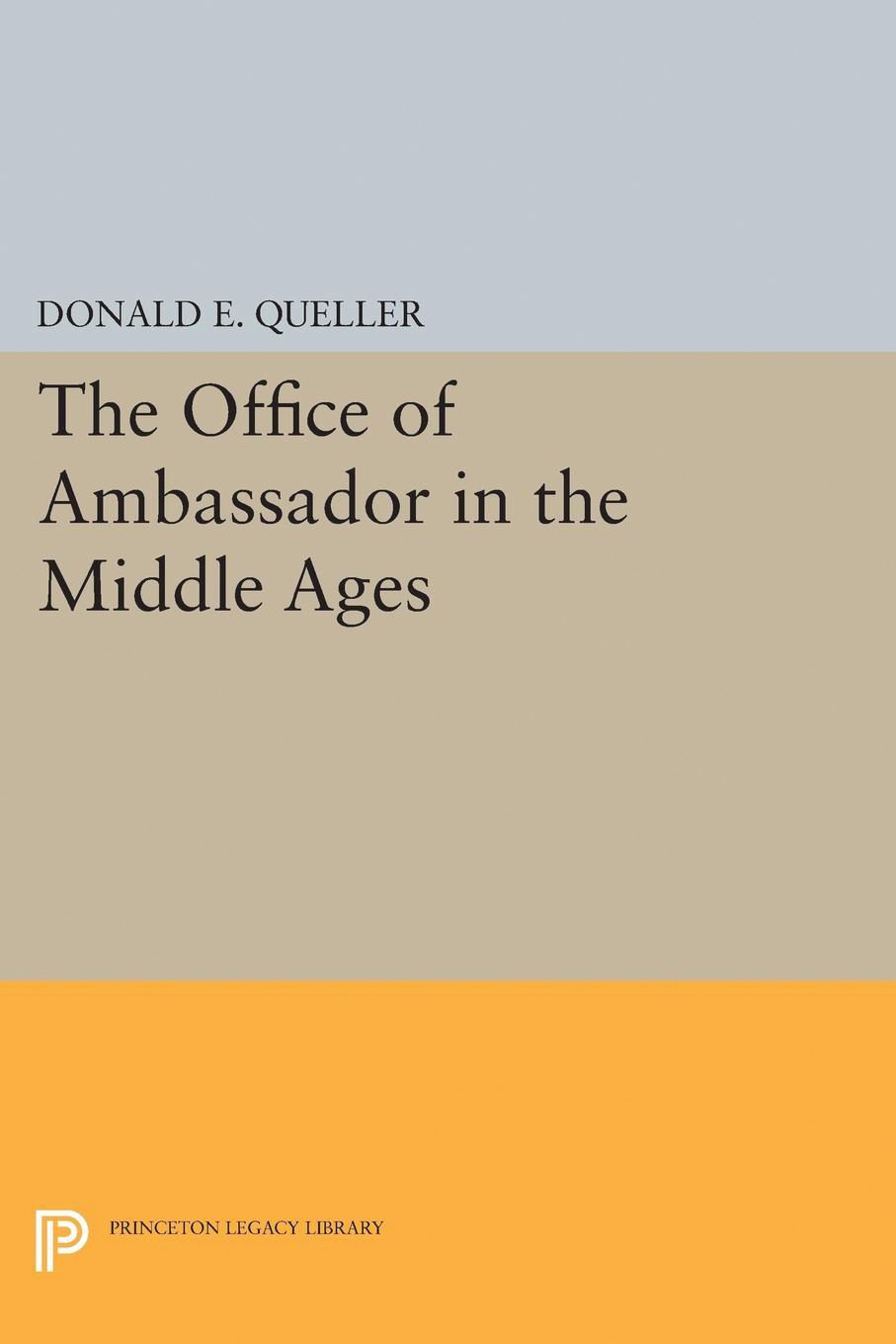
The Office of Ambassador in the Middle Ages
The text discusses the role and responsibilities of an ambassador in the Middle Ages. It touches upon the importance of diplomatic skills, cultural awareness, and the power dynamics involved in representing a kingdom or ruler in foreign territories. The text emphasizes the ambassador's role in negotiation, communication, and fostering positive relationships to advance their country's interests.
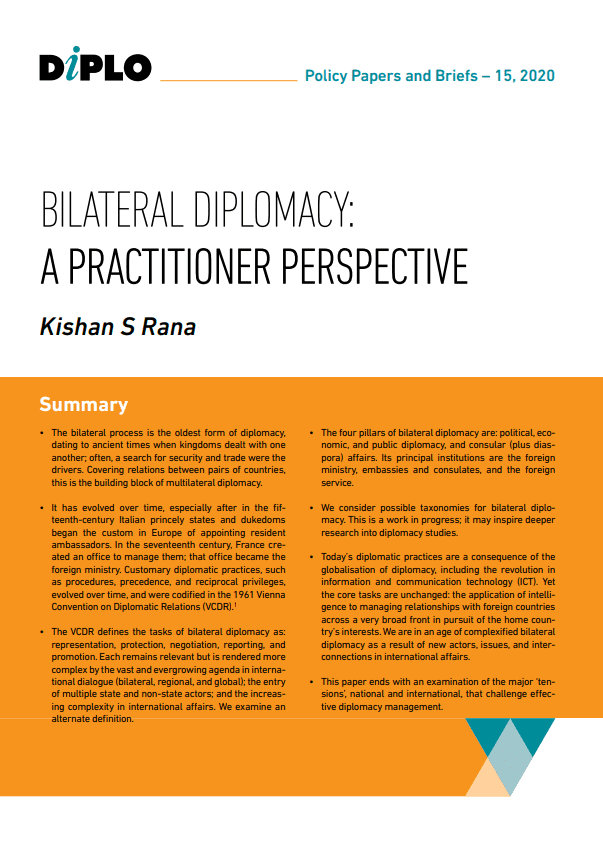
Bilateral Diplomacy: A Practitioner Perspective (Briefing Paper #15)
The text outlines the evolution and significance of bilateral diplomacy as the foundation of international relations, detailing its historical roots, key tasks defined by the Vienna Convention on Diplomatic Relations, and the contemporary challenges and complexities it faces in a globalized world.
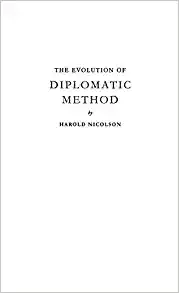
The Evolution of Diplomatic Method
The Evolution of Diplomatic Method discusses the changing nature of diplomacy over time. From traditional methods to modern practices, diplomacy has adapted to technological advancements and global challenges. The article emphasizes the importance of evolving diplomatic strategies to effectively address the complexities of the contemporary world.

Diplomacy: Theory and Practice, 4th ed
Diplomacy: Theory and Practice, 4th ed. examines the complexities of international relations, emphasizing the importance of diplomacy in maintaining peace and navigating conflicts. The book offers insights into both historical and contemporary diplomatic strategies, highlighting the role of communication, negotiation, and compromise in addressing global challenges effectively. Readers will gain a comprehensive understanding of the principles and practical applications of diplomacy, essential for promoting cooperation and resolving disputes on the international stage.

Foreign Ministries: Managing Diplomatic Networks and Optimizing Value
This is a collection of papers presented at the 2006 Conference on Foreign Ministries hosted by DiploFoundation in May 2006, in Geneva. The overarching theme is the adaptation and reform that these ministries have undertaken, in the shape of country experiences and the transformation implemented in specific areas such as the application of information technology for outreach to domestic publics, adaptation in consular services and outsourcing options. Some of the challenging issues addressed cover relations between civil servants and politicians, the role of sub-state entities in diplomacy, an...
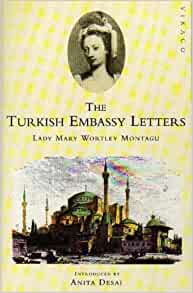
The Turkish Embassy Letters
In "The Turkish Embassy Letters," the author describes her experiences during her stay in Turkey. She shares her observations on the culture, customs, and traditions of the Turkish people. Through her letters, she provides insight into the societal norms and interactions she encounters, offering a unique perspective on life in Turkey.
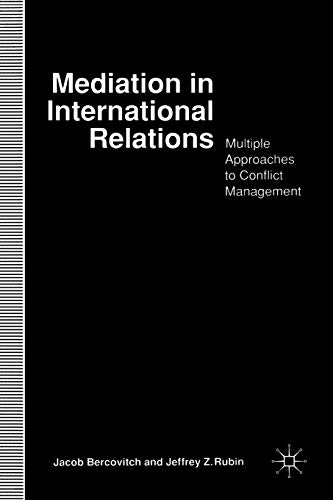
Mediation in International Relations
The practice of mediation in international relations involves third-party intervention to facilitate conflict resolution between parties. Mediators act as neutral facilitators, assisting in communication, negotiation, and finding common ground to reach a peaceful resolution. It is a diplomatic tool used to de-escalate tensions, prevent conflicts, and promote cooperation among nations. Mediation often requires skilled mediators with expertise in conflict resolution and international affairs to navigate complex political dynamics and foster dialogue between conflicting parties.
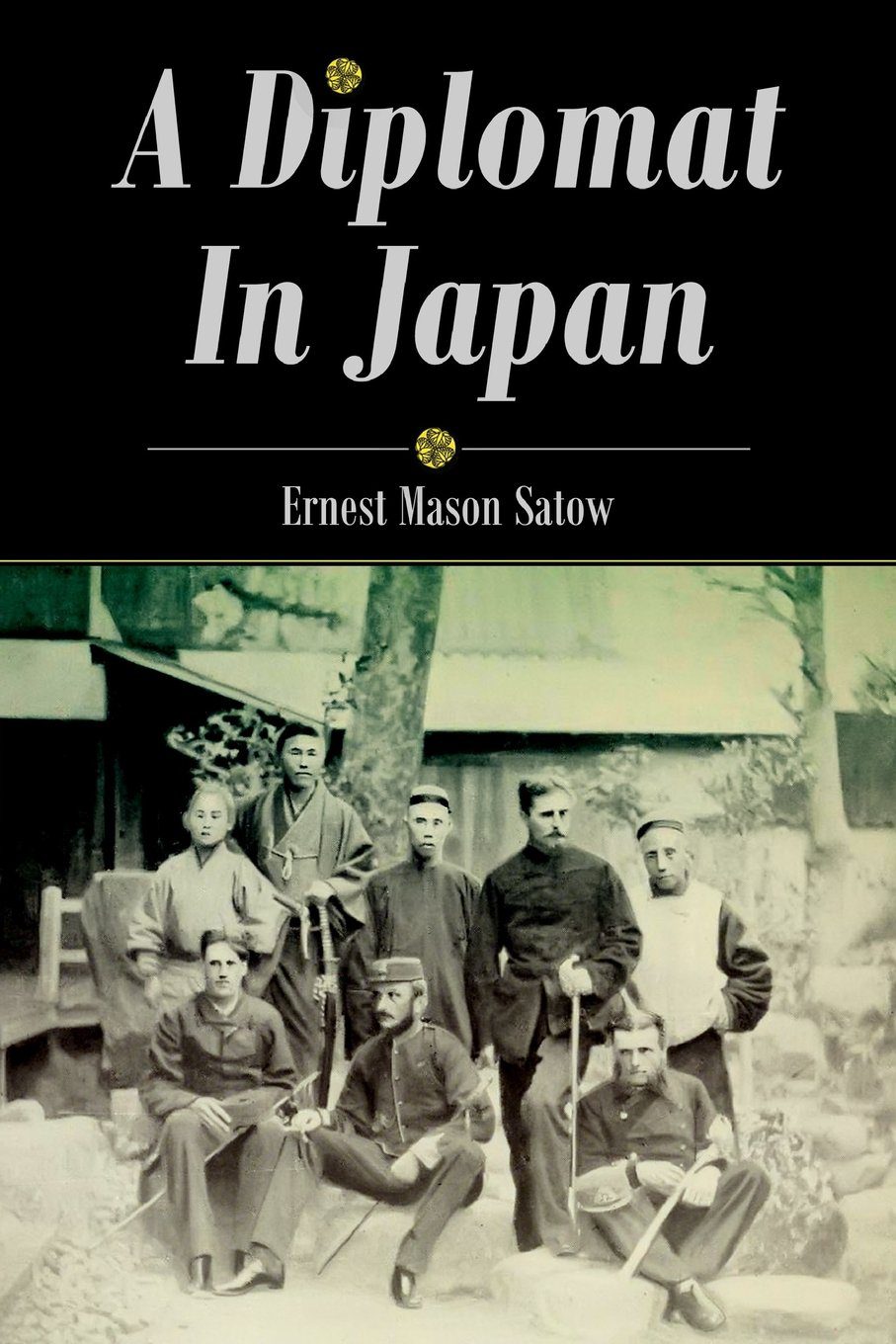
A Diplomat in Japan
The first portion of this book was written at intervals between 1885 and 1887, during my tenure of the post of Her Majesty's minister at Bangkok. I had but recently left Japan after a residence extending, with two seasons of home leave, from September 1862 to the last days of December 1882, and my recollection of what had occurred during any part of those twenty years was still quite fresh. A diary kept almost uninterruptedly from the day I quitted home in November 1861 constituted the foundation, while my memory enabled me to supply additional details. It had never been my purpose to...
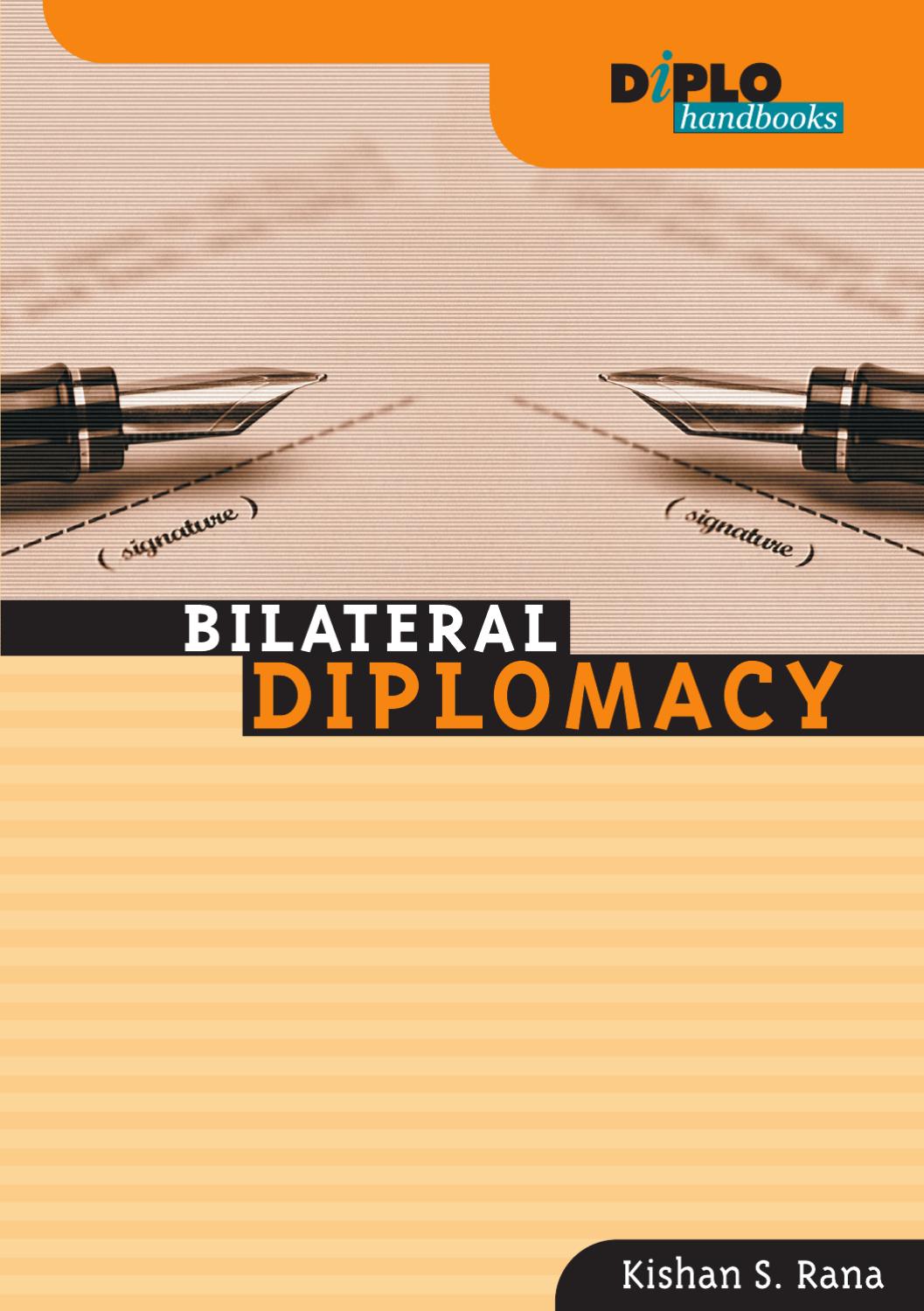
Building relations through multi-dialogue formats: Trends in bilateral diplomacy
The text discusses the importance of building relationships through various dialogue formats in bilateral diplomacy.

British Heads of Mission at Constantinople, 1583-1922
British Heads of Mission at Constantinople from 1583 to 1922 is a detailed account of the diplomatic representatives representing Britain in the capital of the Ottoman Empire over a span of over three centuries. The book delves into the challenges, successes, and significant events faced by these diplomats during this time period, shedding light on the political dynamics and diplomatic relations between the two nations.
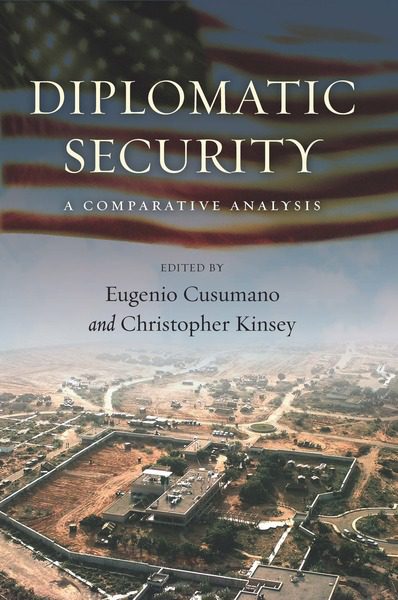
Diplomatic Security under a Comparative Lens – Or Not?
“Diplomatic security” is the term now usually preferred to “diplomatic protection” for the steps taken by states to safeguard the fabric of their diplomatic and consular missions, the lives of their diplomatic and consular officers, and the integrity of their communications; it has the advantage of avoiding confusion with the controversial legal doctrine of diplomatic protection.

Diplomatic culture and its domestic context
Is there a specific, distinctive diplomatic culture? Given the fact that the conduct of diplomacy is regulated by international law and by custom, and since the structures through which states conduct their external relations, both bilateral and multilateral, are standardized, it is fair to say that both the institutions and the process form a pattern of their own, unique to this profession. The professional diplomatist actors on the international stage, and their institutions, display certain shared characteristics.

True Brits: Inside the Foreign Office
True Brits: Inside the Foreign Office" offers an in-depth look into the workings of the British Foreign Office, shedding light on the complexities of international relations and diplomacy.

The Blair Years: Extracts from the Alastair Campbell diaries
Until his resignation amid huge controversy in August 2003, Alastair Campbell was Tony Blair’s official spokesman and director of communications and strategy – ace spin doctor, closest confidante, and constant travelling companion. His diaries have probably been mined chiefly for their astonishing revelations about the internal machinations of his government and the run-up to the invasion of Iraq in 2003. However, they should also be read for the sharp and often amusing light they throw on certain aspects of diplomacy.

English Medieval Diplomacy
The text discusses English Medieval Diplomacy.

The Work of Diplomacy
The message explores the importance and intricacies of the diplomatic process, emphasizing its pivotal role in negotiating peace, resolving conflicts, and fostering international relationships. Diplomacy requires skill, tact, and strategy to navigate complex political landscapes effectively, ultimately aiming to promote stability and cooperation between nations.

Diplomatic Theory from Machiavelli to Kissinger
The discussion in the text centers on the evolution of diplomatic theory from Machiavelli's emphasis on power politics to Kissinger's approach of balancing power and morality in international relations. It explores how these different perspectives have influenced diplomatic strategies throughout history, ultimately shaping the field of diplomacy.
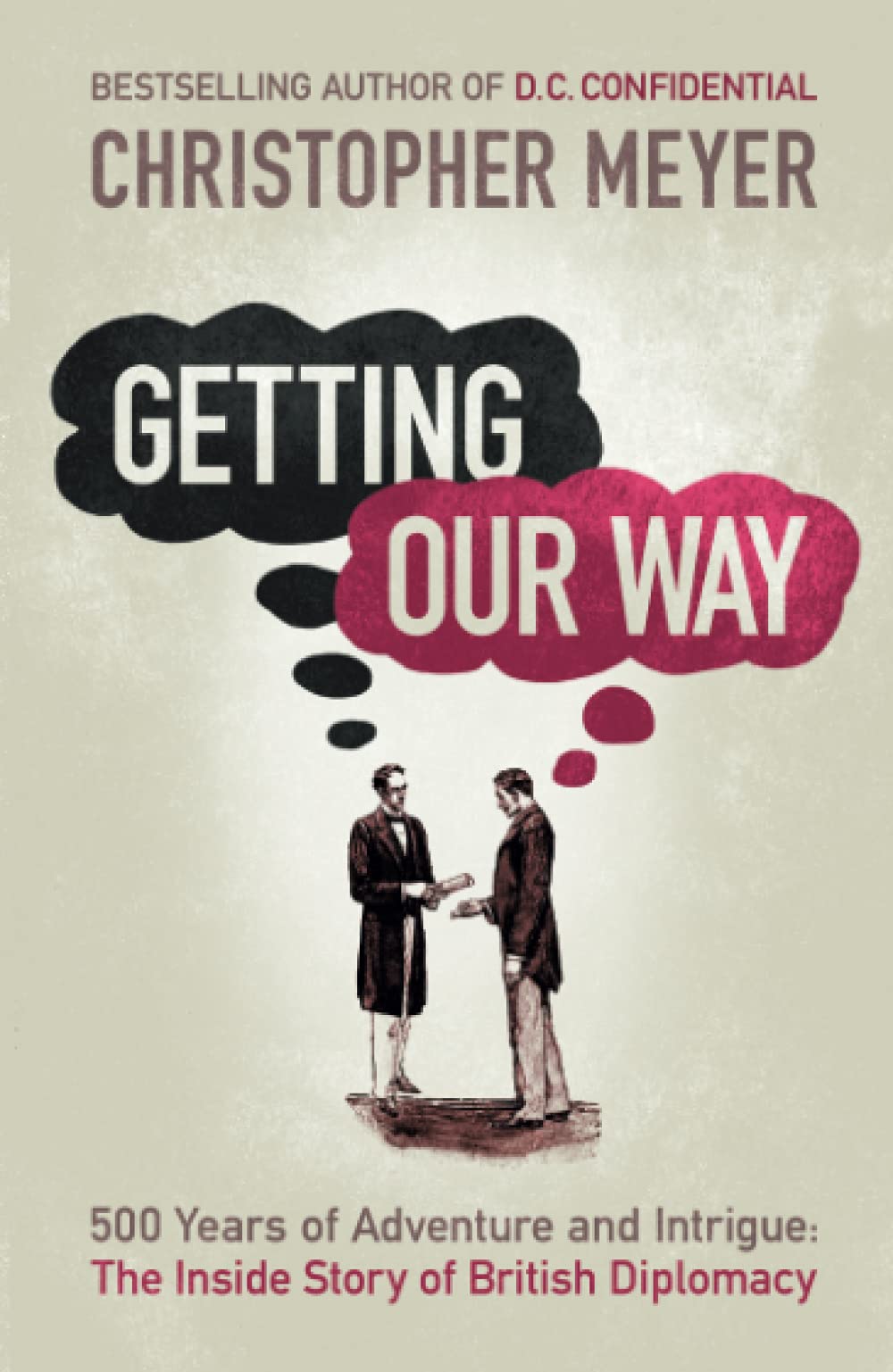
Getting Our Way: 500 Years of Adventure and Intrigue: The Inside Story of British Diplomacy
The message summarizes the book "Getting Our Way: 500 Years of Adventure and Intrigue: The Inside Story of British Diplomacy.

Diplomatenleben
A must-have for German-speaking students of Swiss diplomacy (and diplomacy generally) since the Second World War is Dr. Max Schweizer’s recently published Diplomatenleben.
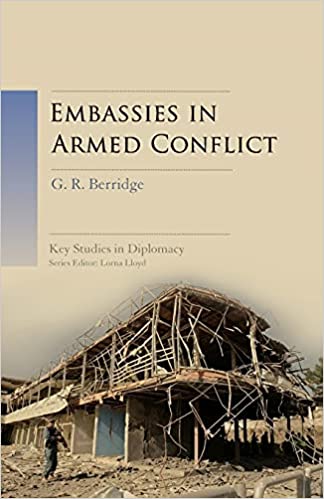
Embassies in Armed Conflict
Apologies for the oversight, please provide the content that you would like summarized.
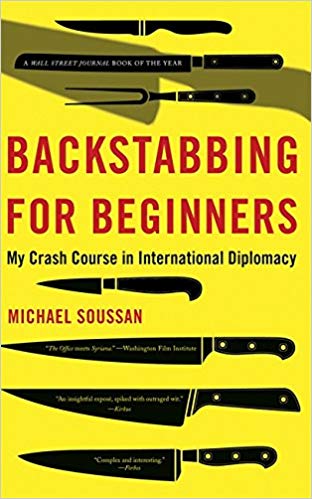
Backstabbing for Beginners: My Crash Course in International Diplomacy
On 21 April 2004, the Security Council adopted resolution 1538(2004), the most embarrassing resolution in the history of the United Nations. The resolution appointed an independent high-level inquiry whose mandate was to 'collect and examine information relating to the administration and management of the Oil-for-Food Programme, including allegations of fraud and corruption on the part of United Nations officials, personnel and agents, as well as contractors, including entities that have entered into contracts with the United Nations or with Iraq under the Programme.'
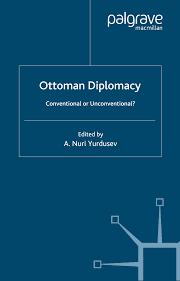
Ottoman Diplomacy
In tne text "Ottoman Diplomacy," the Ottoman Empire's diplomatic practices are explored, focusing on their use of ambassadors, gifts, and protocol to maintain relationships with other powers. This diplomacy was essential to the empire's survival and success throughout its history.
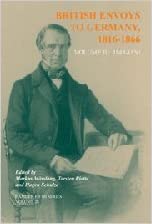
British Envoys to Germany 1816-1866
The text discusses the role and activities of British envoys in Germany from 1816 to 1866.
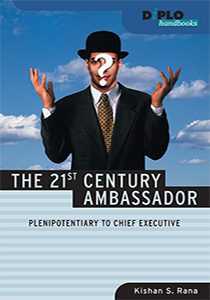
The 21st Century Ambassador: Plenipotentiary to Chief Executive
Ambassador Kishan Rana, a diplomatist for four decades, is now a noted scholar and theorist of international relations and the new diplomacy that has evolved.
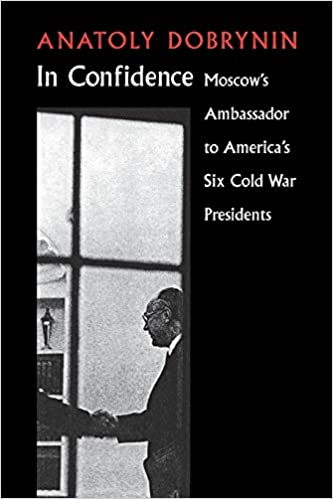
In Confidence: Moscow’s Ambassador to Six Cold War Presidents
The book "In Confidence: Moscow's Ambassador to Six Cold War Presidents" gives an inside look at diplomatic relations during the Cold War by sharing the experiences of Moscow's ambassador to the United States.
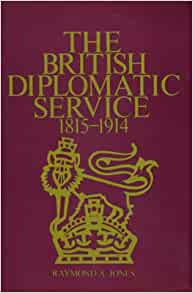
The British Diplomatic Service 1815-1914
The British Diplomatic Service from 1815 to 1914 showcases the evolution of a prestigious institution that adapted to the changing political landscape of the 19th century. This period saw the service expand its reach globally, employing both traditional aristocratic diplomats and a growing number of professionals. The diplomatic corps played a vital role in maintaining British interests abroad, while facing challenges such as increased international competition and demands for specialized knowledge. The period also witnessed the professionalization of diplomatic practices and the development o...
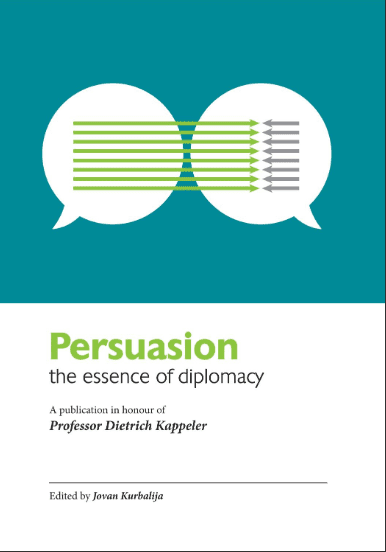
Why Persuasion? Reflections after 50 years of practising, teaching and studying diplomacy
From the faraway days when representatives of fighting tribes tried to arrange for a truce, thereby risking their head, to the often derided endless discussions within present day international frameworks, the common aim of diplomacy has remained persuasion. The better a diplomat is at persuading, the more successful he will be in furthering the cause he represents.
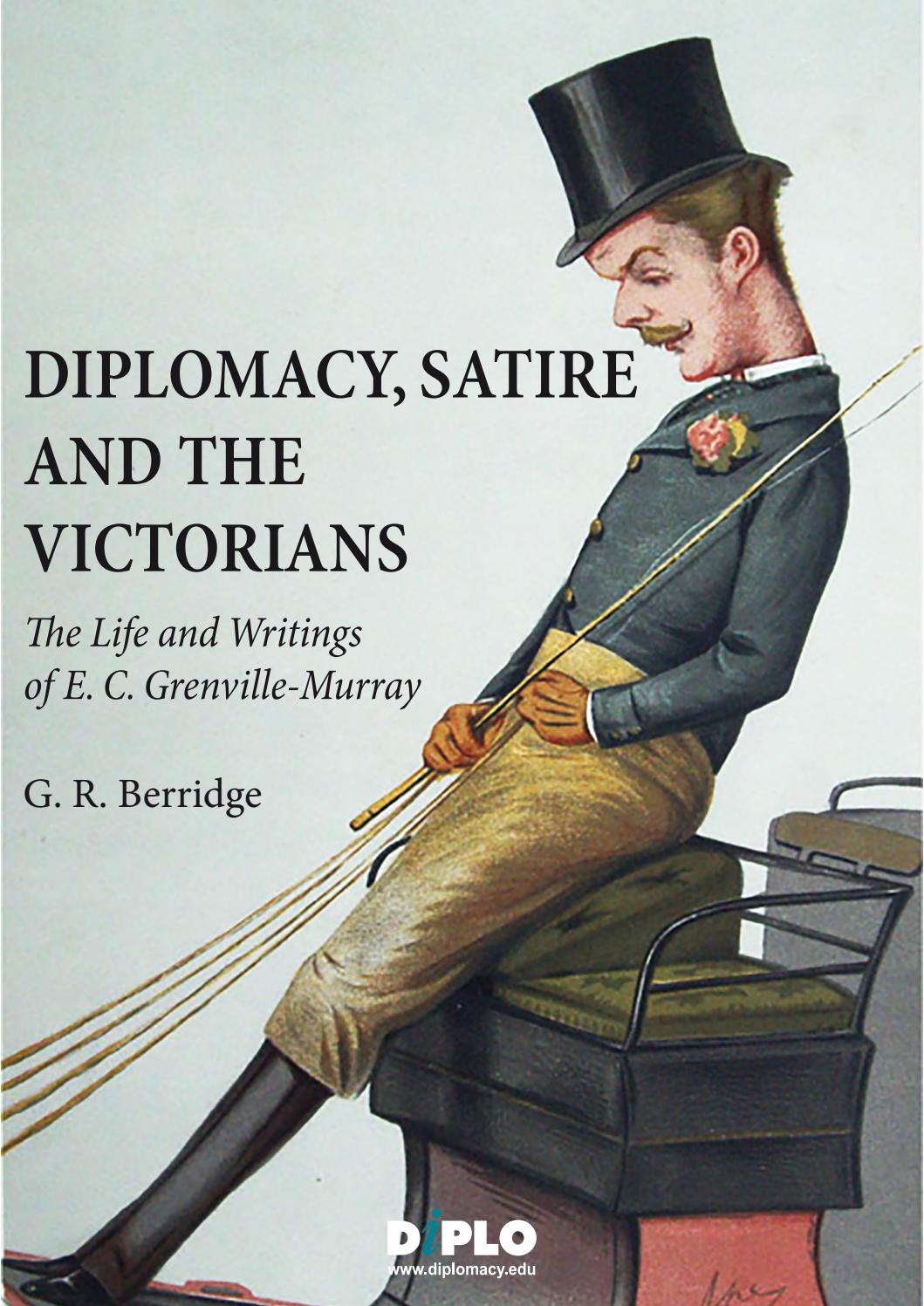
Diplomacy, Satire and the Victorians
This book, which rests on extensive use of private papers, official documents, press archives and not least Grenville-Murray’s vast output (including novels), is the first biography of this complex man to be written. It begins with the difficulties produced by his illegitimate birth, and then describes his patronage by Lord Palmerston and Charles Dickens, his colourful diplomatic career, and finally his blossoming as a successful writer in France in the 1870s
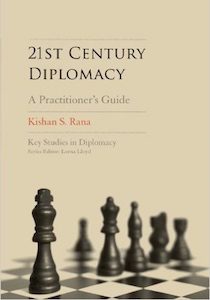
21st Century Diplomacy: A Practitioner’s Guide
In the 21st century, new kinds of challenges resulting from interdependence among states and globalisation have had a determining impact of the conduct of diplomacy. Diplomacy has become multifaceted, pluri-directional, volatile and intensive, due to the increased complexity in terms of actors, dialogues subjects, modes of communication, and plurality of objectives. This unique text, written by a leading scholar and Foreign Service expert, examines all such factors to provide the definitive guide to diplomacy as it is practiced today. With a multitude of examples from around the world, includi...
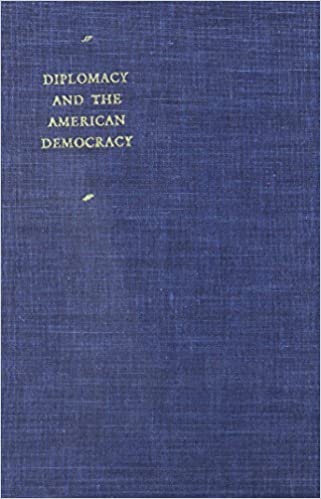
Diplomacy and the American Democracy
The text discusses the connection between diplomacy and American democracy. Diplomacy is essential for promoting American values, interests, and security worldwide. It highlights the importance of diplomacy in advancing democracy, human rights, and peace. Diplomatic efforts help address global challenges and conflicts, contributing to a more stable and prosperous world. Diplomacy is a key tool in shaping international relations and ensuring America's leadership on the global stage. It emphasizes the need for strategic and effective diplomacy in advancing American interests and promoting democr...
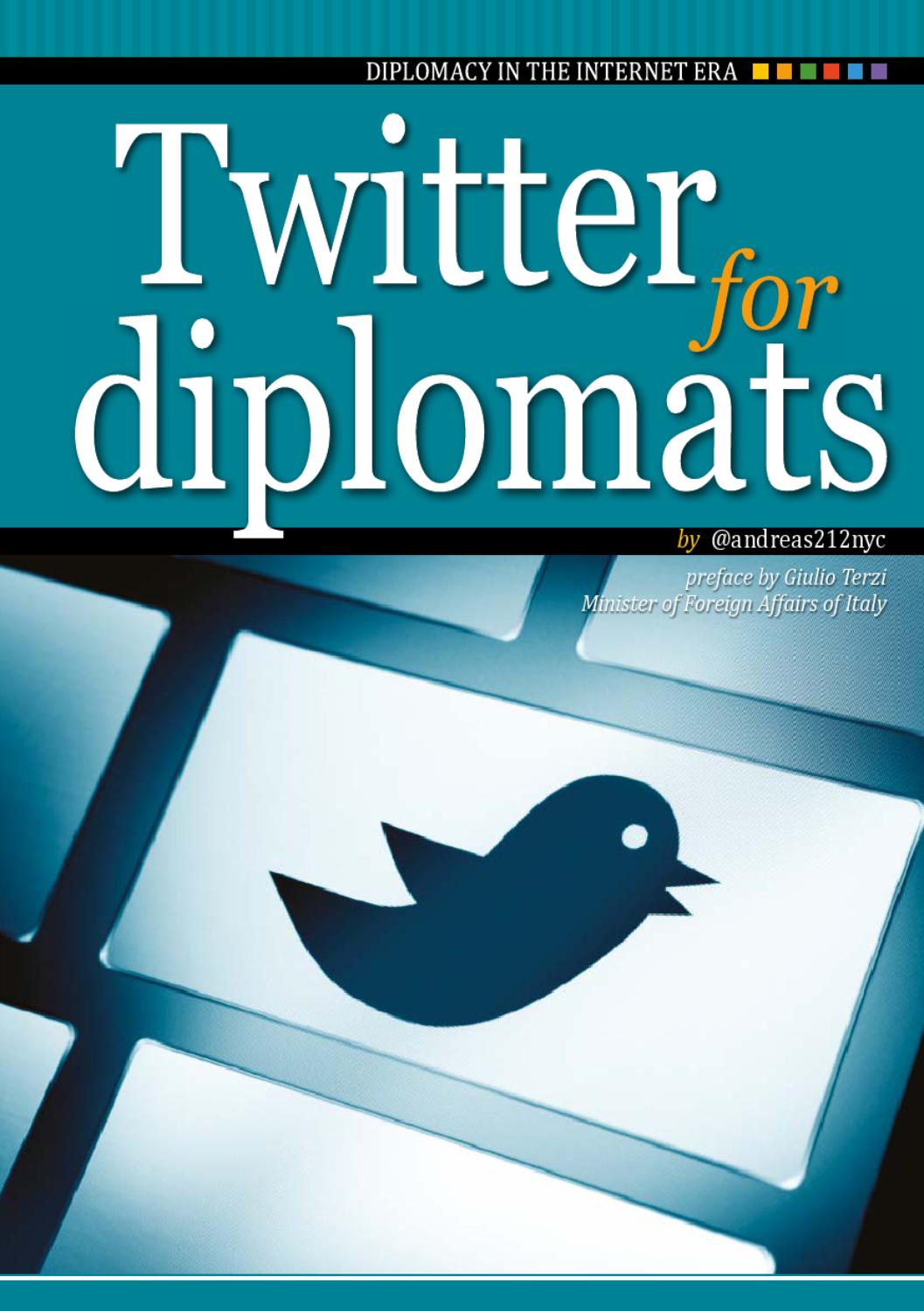
Diplomats on Twitter: The good, the bad and the ugly
The article discusses how diplomats are using Twitter, highlighting both the positive and negative aspects of their presence on the platform.

A Dictionary of Diplomacy, Second Edition
Like all professions, diplomacy has spawned its own specialized terminology, and it is this lexicon which provides A Dictionary of Diplomacy 's thematic spine.
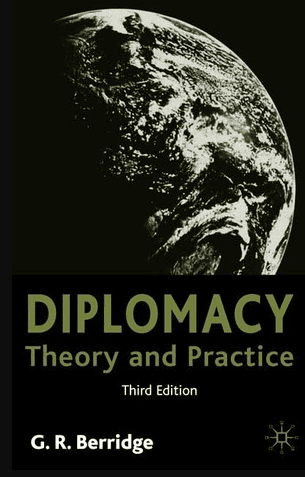
Diplomacy: Theory and Practice
Let us suppose that you are left, like Robinson Crusoe, on a deserted island, under instructions to learn about diplomacy. To that elevated purpose you would be allowed to keep one book only, the rest of the luggage consisting of things more essential for your physical survival, like a gun and gunpowder. The choice of that particular book may not be that difficult, if you had at hand the third edition of Diplomacy: Theory and Practice by G.R. Berridge.

The Palgrave Macmillan Dictionary of Diplomacy, Third Edition
Indispensable for students of diplomacy and junior members of diplomatic services, this dictionary not only covers diplomacy's jargon but also includes entries on legal terms, political events, international organizations, e-Diplomacy, and major figures who have occupied the diplomatic scene or have written about it over the last half millennium.
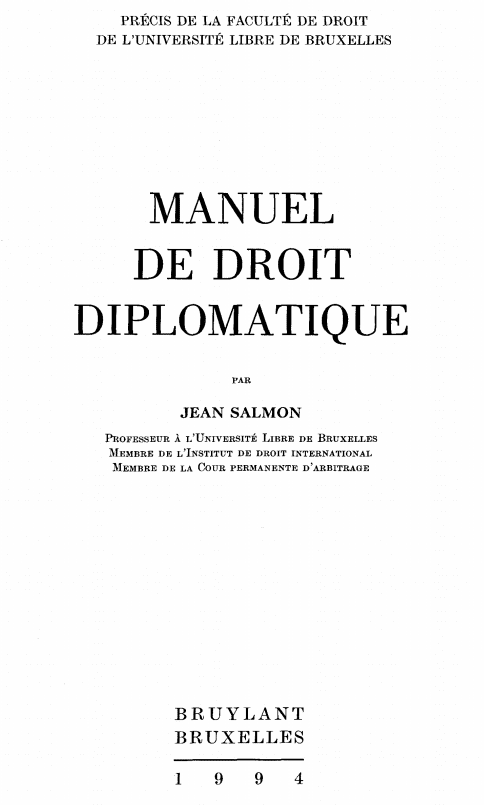
Manuel de droit diplomatique
This text is the first chapter of the "Manuel de droit diplomatique," a comprehensive guide on diplomatic law.
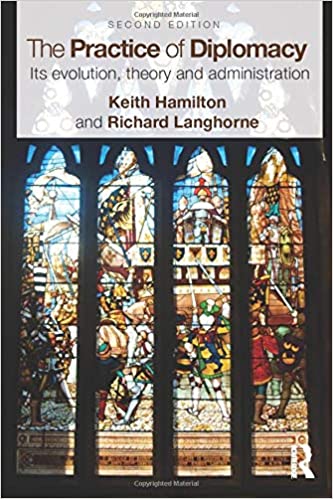
The Practice of Diplomacy, 2nd ed
The importance of public diplomacy as a means to communicate with foreign publics is underscored in the text. Diplomats need to understand local cultures and values to effectively engage with foreign populations and build trust and cooperation.

To joke or not to joke: A diplomatic dilemma in the age of internet
Part of Language and Diplomacy (2001): The first paper, presented by Prof. Peter Serracino-Inglott as the keynote address at the 2001 conference, examines the serious issue of diplomatic communication in a playful manner, through one of the most paradigmatic and creative examples of language use: joking.
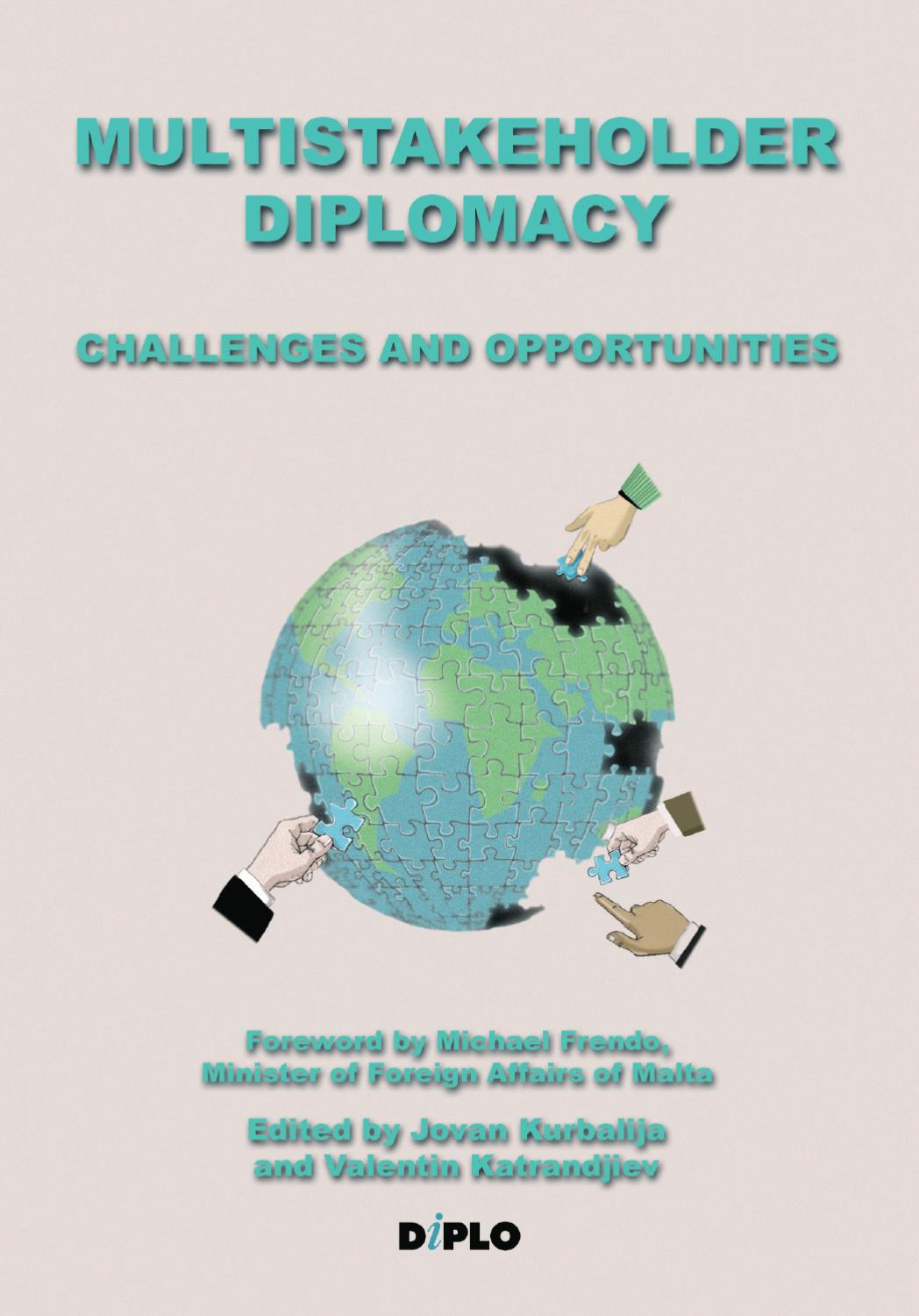
Reflections on multistakeholder diplomacy
Through analysis of the procedural and institutional arrangements in the functioning of international bodies, Valentin Katrandjiev, seeks to measure the extent to which diplomats accept nonofficial networks and entities as equal partners in the diplomatic negotiation process. Katrandjiev analyses the trend that on the domestic front, societies demand greater public accountability of governments in the process of national foreign policy making. He attempts to do so through the organisational units in MFAs responsible for relationships with domestic stakeholders.
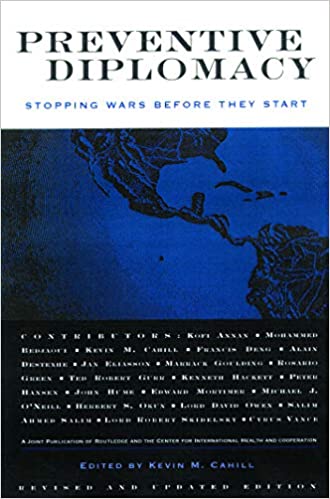
Preventive Diplomacy: Stopping Wars Before they Start
The text discusses the concept of preventive diplomacy as a proactive approach to preventing wars before they begin.
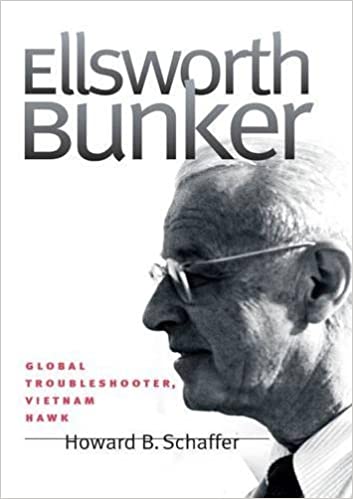
Ellsworth Bunker: Global Troubleshooter, Vietnam Hawk
The message focuses on the life and career of Ellsworth Bunker, depicting him as a global troubleshooter and a Vietnam Hawk.
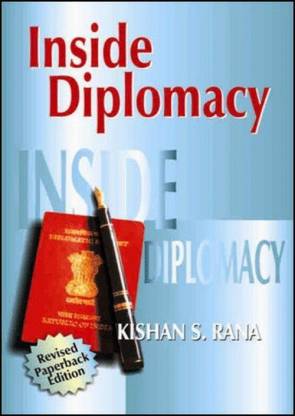
Inside Diplomacy
This is a book on diplomacy in general and the Indian Foreign Service (IFS) in particular. It is also a gem, and a large gem. It breathes life, wisdom, and good humour, and is full of rich detail. I found it thoroughly absorbing. Students of diplomacy at all stages of their careers will find it immensely useful, while those in a position to influence the future shape of the IFS will discover a whole raft of constructive suggestions for reform fearlessly advanced.
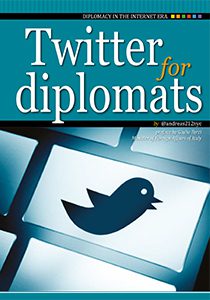
Twitter for Diplomats
Twitter for Diplomats is not a manual, or a list of what to do or not to do. It is rather a collection of information, anecdotes, and experiences. It recounts a few episodes involving foreign ministers and ambassadors, as well as their ways of interacting with the tool and exploring its great potential. It wants to inspire ambassadors and diplomats to open and nurture their accounts – and it wants to inspire all of us to use Twitter to also listen and open our minds.
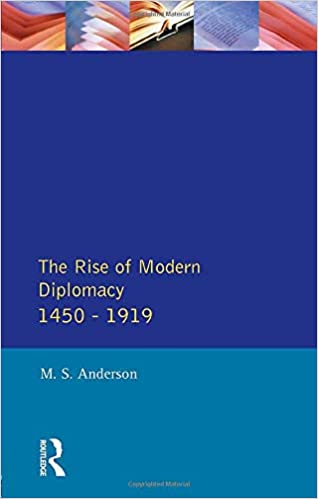
The Rise of Modern Diplomacy, 1450-1919
The text discusses how modern diplomacy evolved between 1450 and 1919, highlighting the changes in diplomatic practices, the emergence of new diplomatic actors, and the impact of historical events on diplomacy during this period.
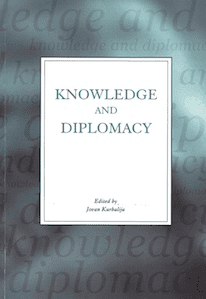
How do you know what you think you know?
In his paper, J. Thomas Converse focuses on four records-related areas where the issues of knowledge management and diplomacy come together and provide the greatest challenges to archivists, diplomats, historians and technology providers: validation, trustworthiness, context and longevity. He also explores some of the changes and challenges brought about by technology, and urges for a continued embrace of technology, while at the same time demanding the validating and relational functions which give archives their trustworthiness.
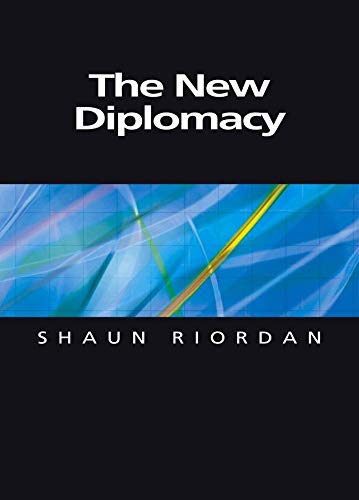
The New Diplomacy
Shaun Riordan was a British diplomat for 16 years before resigning in 2000 to take up private consultancy work and journalism in Spain, where he had ended his diplomatic career as political officer in the embassy. He has written a conceptually flawed, often vague, sometimes contradictory, and essentially polemical attack on 'traditional diplomacy'. It is also peppered with New Labour jargon ('stakeholders', 'global governance', 'civil society'), has its fair measure of superficially examined mantras, misquotes Clausewitz, and sports a shop-soiled title - is he not aware that Abba Ebban publish...

Persuasion: bad practices and … others
Persuasion is a very relative concept. Like beauty, persuasion is the eye of the beholder. Admittedly, persuasion does not exist in the absence of results. One can say that persuasion can be defined as such, if and only if it is effective and reaches its goals. If we accept this prerequisite, we may find persuasion where we least expect it.
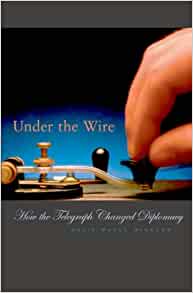
Under the Wire: How the Telegraph Changed Diplomacy
Review by Geoff Berridge

“Control yourself, Sir!”: A call for research into emotion cultures in diplomacy
This essay examines and seeks to explode the notion that diplomats are, or should be, immune to emotion in the conduct of their duties. It also discusses the concept of emotion cultures - cultural rules governing the experience and expression of emotion and suggests the possibility that modern diplomacy, perhaps a distinctive culture in itself, encourages the socialisation of diplomats into a distinctive, ostensibly global diplomatic emotion culture.
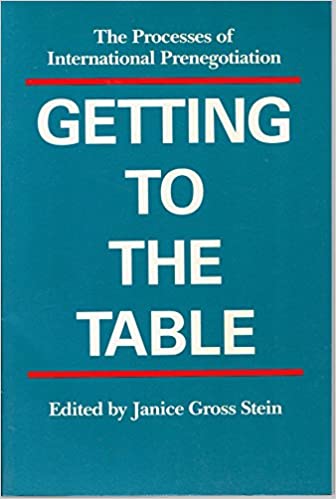
Getting to the Table: The Process of International Prenegotiation
The discussed text focuses on the process of international prenegotiation, highlighting the importance of understanding the dynamics and relationships between parties before formal negotiations begin.
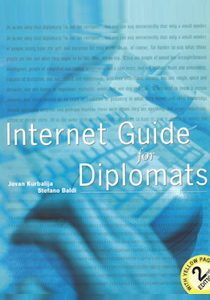
Internet Guide for Diplomats
The Internet Guide for Diplomats is the first guide specifically conceived and realised to assist diplomats and others involved in international affairs to use the Internet in their work. The book includes both basic technical information about the Internet and specific issues related to the use of the Internet in diplomacy. Examples and illustrations address many common questions including web-management for diplomatic services, knowledge management and distance learning.
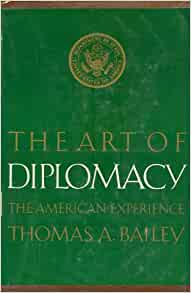
The Art of Diplomacy: The American Experience
The text explores the practice of diplomacy within the context of American history, examining the strategies, challenges, and outcomes of diplomatic efforts throughout the nation's experience.
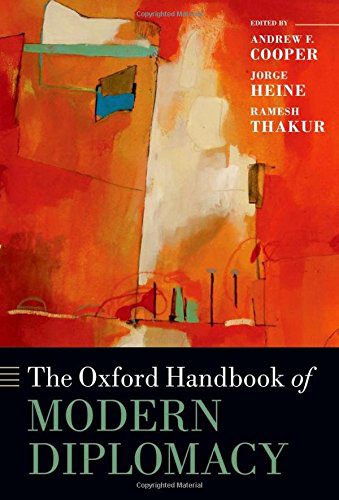
The Oxford Handbook of Modern Diplomacy
The message provides information on modern diplomacy from The Oxford Handbook of Modern Diplomacy.
The inertia of Diplomacy
Diplomacy is used to manage the goals of foreign policy focusing on communication. New trends affect the institution of diplomacy in different ways. Diplomacy has received an additional tool in the form of the Internet. In various cases of interdependence and dependence interference in a country’s affairs is accepted. Multilateral cooperation has created parliamentary diplomacy and a new type of diplomat, the international civil servant. States and their diplomats are in demand to curb the excesses of globalization. The fight against terrorism also brought additional work for diplomac...

Pragmatics in diplomatic exchanges
Part of Language and Diplomacy (2001): Edmond Pascual interprets diplomatic communication with the linguistic tools of pragmatics. He begins by reminding us that while the diplomat is a "man of action," the particular nature of the diplomat's action is that it consists of speech. Pascual applies three concepts of pragmatics to diplomatic discourse: speech as an intentional act; the effects of the act of speech; and the role of the unsaid in the act of speech.
Diplomatic Persuasion: An Under-Investigated Process
The under-investigation in diplomatic studies of processes of persuasion in explaining diplomatic outcomes needs to be addressed in the interests of better scholarly explanations and diplomatic practice. Although such processes are implicit in nearly all concepts and practice of diplomacy, neither scholars nor practitioners explicitly investigate them. Yet other related fields of study and disciplines examine persuasion and demonstrate its explanatory value.

Language, signaling and diplomacy
Part of Language and Diplomacy (2001): Ambassador Kishan Rana introduces the dimension of diplomatic signalling. Beginning with a reference to the Bhagwad Gita, one of the sacred texts of the Hindus, Rana outlines the qualities of good diplomatic dialogue: not causing distress to the listener, precision and good use of language, and truthfulness.
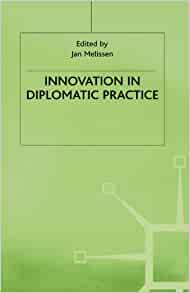
Innovation in Diplomatic Practice
The text discusses the need for innovation in diplomatic practice to address modern challenges effectively. Diplomats must adapt to changing dynamics, such as digital diplomacy and non-state actors, to achieve diplomatic objectives successfully. Traditional diplomatic methods may need to be revised or replaced to meet the demands of contemporary international relations. Innovation and creativity are essential for diplomats to navigate complex global issues and promote peace and cooperation among nations.

Beyond diplomatic – the unravelling of history
In his paper, Robert Alston travels through time to rekindle an important highlight – as well as a personal highlight – in the history of knowledge management. His journey takes him back to the 1850s, which saw Antonio Panizzi’s efforts in creating a universal repository of knowledge in the British Museum; and to the 1990s, a time in which he acquired first-hand experience at the same museum, drawing conclusions on the various available ways of navigating large bibliographical and archival databases.
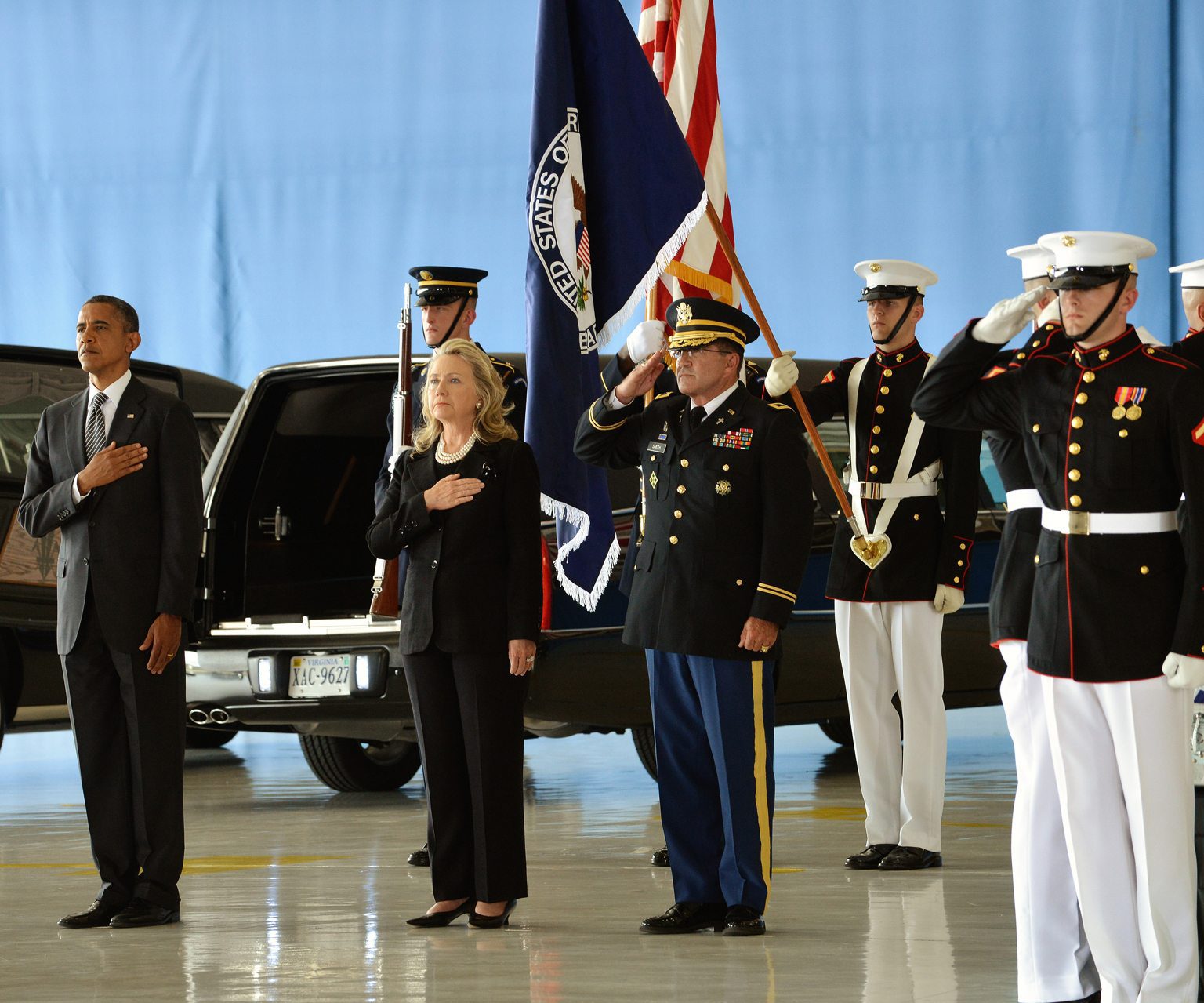
A weak diplomatic hybrid: U.S. Special Mission Benghazi, 2011-12
In the widespread coverage of the brutal murder of US Ambassador to Libya Christopher Stevens and others in the US mission in Benghazi on 11 September 2012, there has been much confusion over the character of the post. It has been repeatedly described in the media as the American ‘consulate’ but the official position, recently stated emphatically by the Report of the Accountability Review Board for Benghazi (ARB) convened by secretary of state Hillary Clinton, is that ‘the U.S. Special Mission in Benghazi was never a consulate and never formally notified [in any character] to the Libyan ...
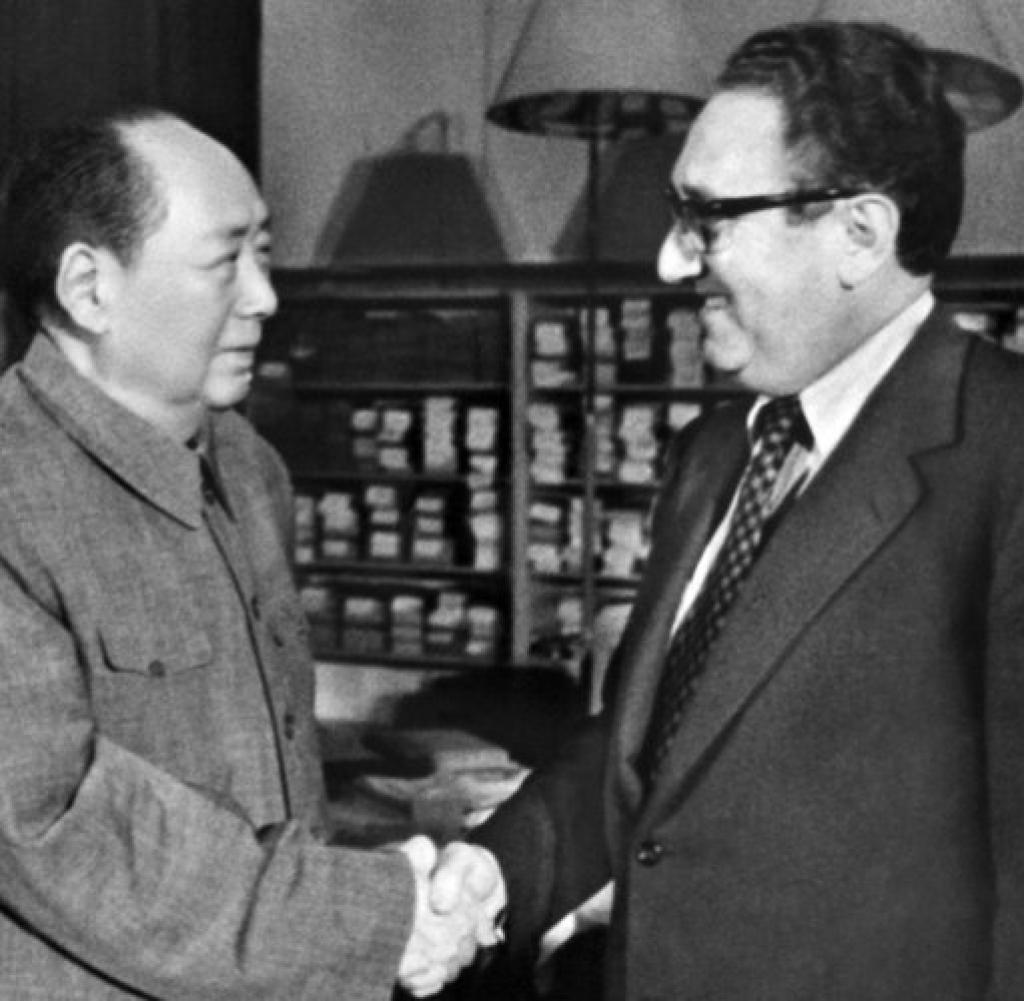
The Beijing-Washington Back-Channel and Henry Kissinger’s Secret Trip to China
The text discusses the Beijing-Washington back-channel and Henry Kissinger's covert visit to China.
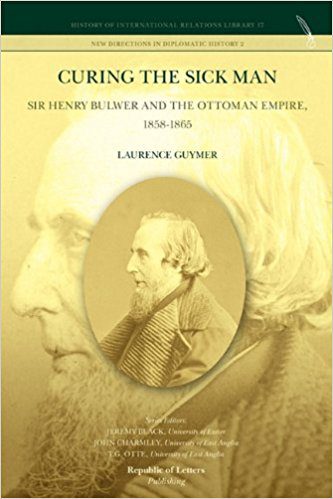
Curing the Sick Man: Sir Henry Bulwer and the Ottoman Empire, 1858-1865
This is the first book of a very promising young historian. Laurence Guymer, who is head of the Department of History at Winchester College and a research associate in the School of History at the University of East Anglia, has produced a biography of Sir Henry Bulwer that successfully challenges the conventional account of this colourful mid-Victorian figure. It also raises the question of how ‘diplomatic success’ is judged.
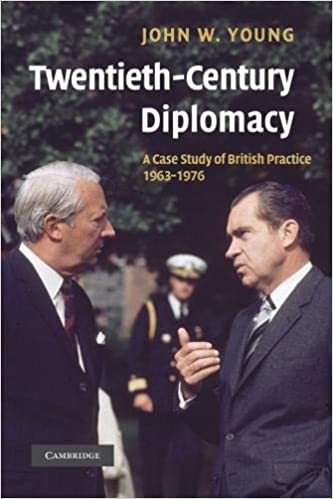
Twentieth Century Diplomacy: A case study of British practice, 1963-1976
The book review discusses a case study of British diplomacy from 1963 to 1976. It delves into various diplomatic methods employed during this period, such as resident embassies, special missions, summitry, state visits, and dealing with unfriendly governments. The study highlights the importance of traditional diplomatic practices alongside newer forms, showing how they complement rather than compete with each other. The review praises the book's thorough research and insightful analysis, suggesting it as a model for enhancing understanding of diplomatic practices in different contexts.
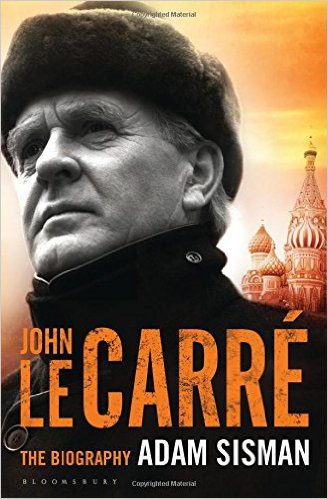
John le Carré: The Biography
I thought to review this book because I had enjoyed the spy novels of John le Carré and, having introduced a chapter on secret intelligence into the latest edition of my textbook and mentioned him in it (p. 155), was keen to see if Adam Sisman had turned up anything new about the novelist’s own short career as an intelligence officer in what was then West Germany.
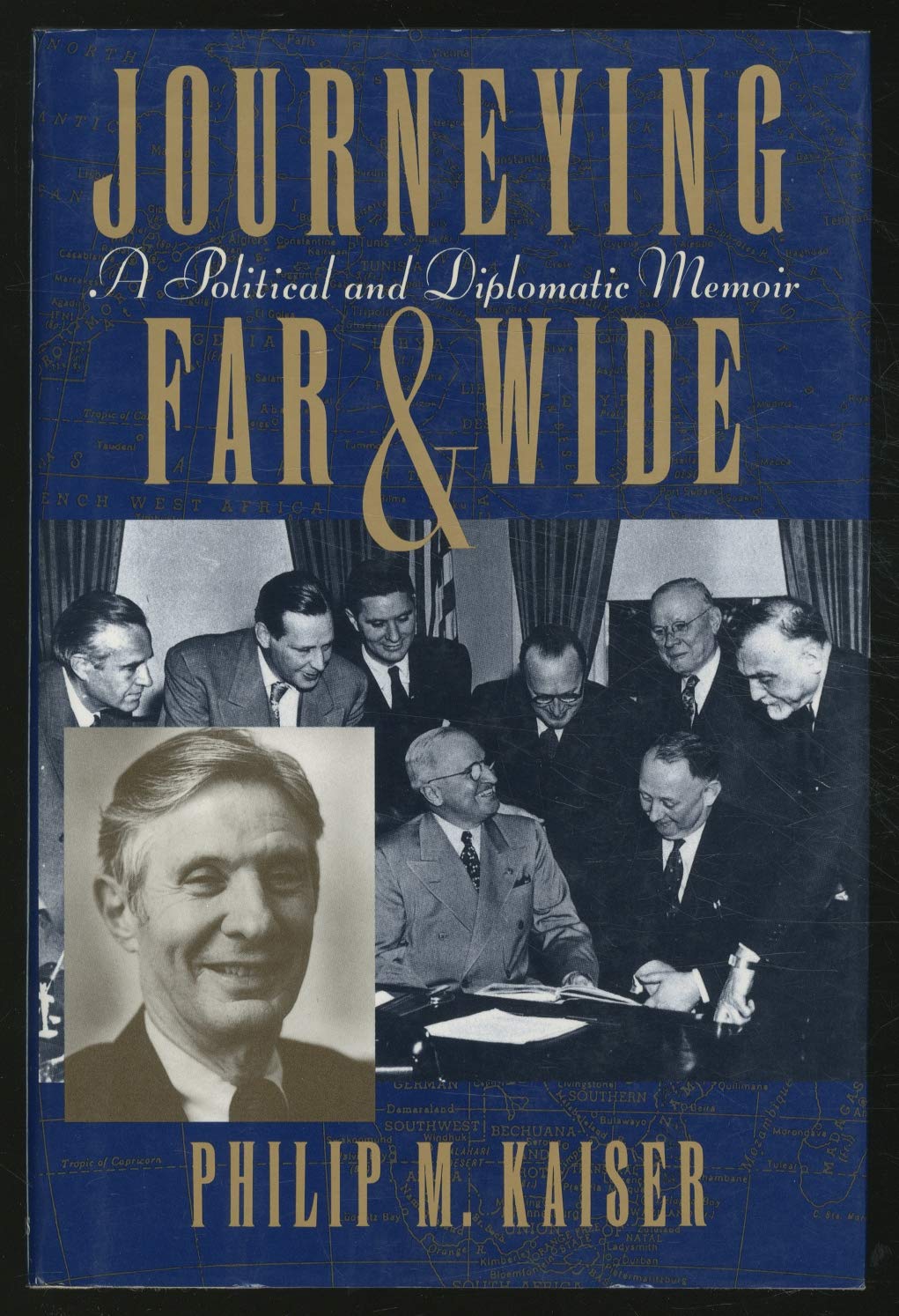
Journeying Far and Wide: A Political and Diplomatic Memoir
Kaiser was an active Democrat and 'noncareer officer' in the US Foreign Service under three Democratic presidents: Kennedy, Johnson, and Carter. His memoir, which is uncluttered with the trivial detail sometimes found in this genre and written with great verve, will be valued by diplomatic historians of the whole period since the Second World War. (Kaiser had served earlier as Assistant Secretary of Labor for International Affairs in the Truman administration.)
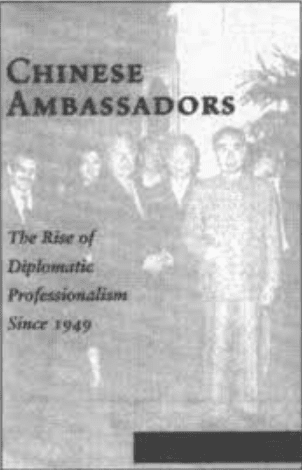
Chinese Ambassadors: The rise of diplomatic professionalism since 1945
Xiaohong worked on Western European affairs in the Ministry of Foreign Affairs in Beijing from 1977 until 1989. At some point after this she entered the School of Advanced International Studies at Johns Hopkins University in the United States, and in 1997 was awarded a Ph.D. This book is her doctoral thesis, and - on the whole - a very good one it is. Chinese Ambassadors is based on many interviews with former diplomats and a variety of Chinese primary sources (including memoirs), and is clear, well organized, and - in its main thrust - tightly argued. As a result, it offers a rare insight int...
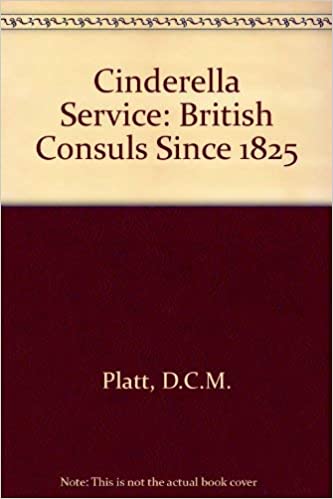
The Cinderella Service: British Consuls since 1825
The British Consul Service has evolved over the years since 1825, adapting to modern times while maintaining its traditional values and responsibilities.

Texts in diplomacy
Part of Language and Diplomacy (2001): Professor Dietrich Kappeler provides an overview of the various types of formal written documents used in diplomacy, pointing out where the practices surrounding these documents have changed in recent years. He also discusses multi-language treaties, including the difficulties of translation and interpretation.
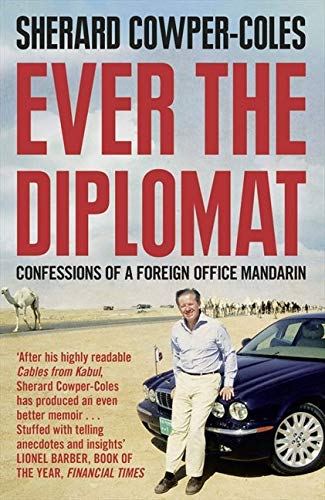
Ever the Diplomat
The message reflects a calm and diplomatic approach to communication.
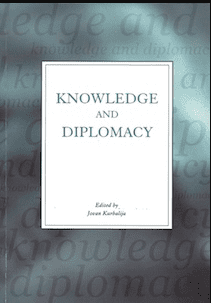
Leaders’ rhetoric and preventive diplomacy – issues we are ignorant about
In this paper, Drazen Pehar analyses the argumentation made by George Lakoff of the University of California at Berkeley in his seminal paper on ‘Metaphor and War’, in which he tried to deconstruct the rhetoric U.S. president George Bush used to justify the war in the Gulf. He also analyses a reading by psycho-historian Lloyd deMause, whose theory differs from Lakoff’s. Throughout his analysis, Pehar describes the role of rhetoric in diplomatic prevention of armed conflicts, and its several functions, and concludes that the methods of preventive diplomacy depend heavily on the theory of...

Diplomacy under a Foreign Flag: When nations break relations
The text is about diplomatic relations between countries and the implications of breaking these ties.
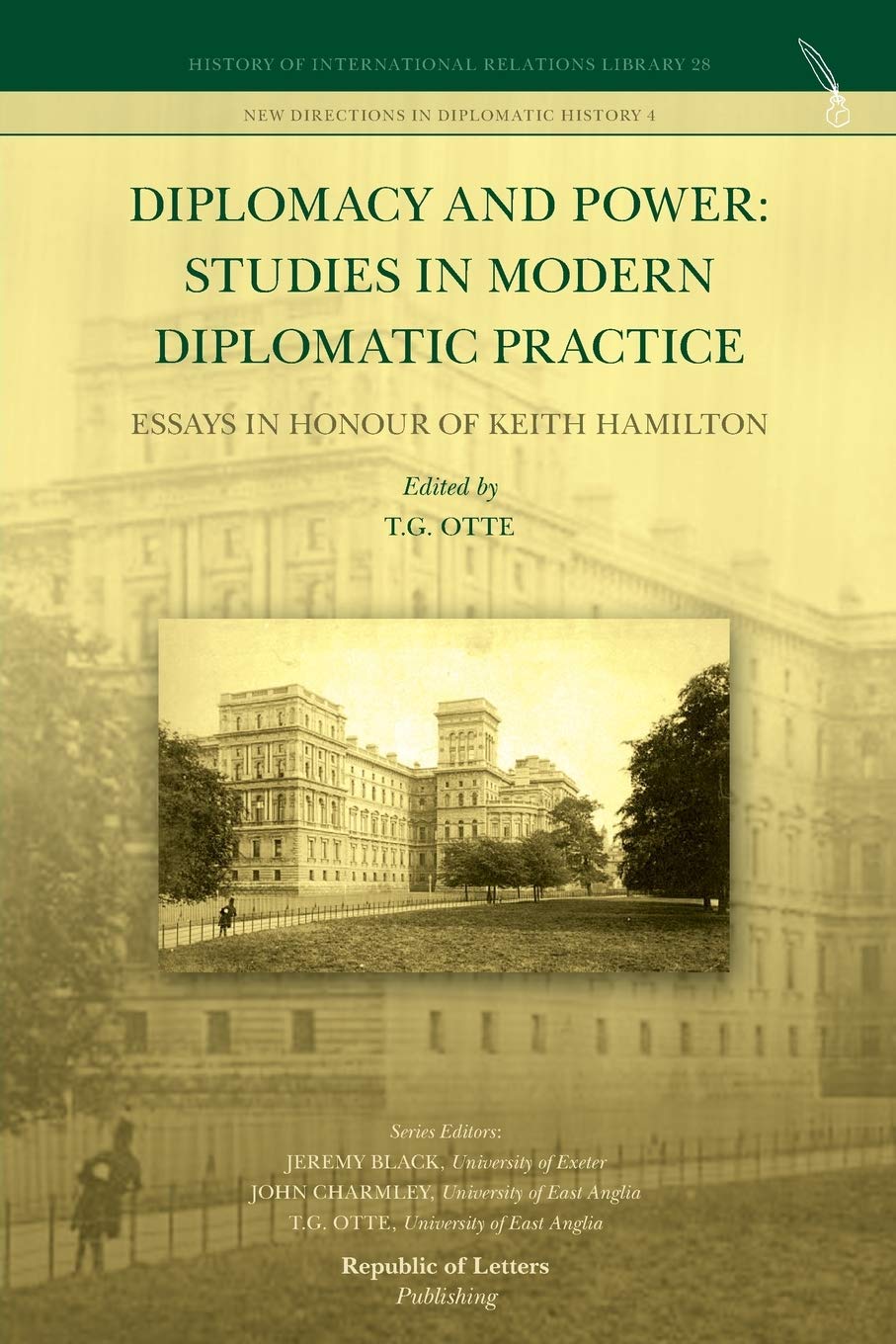
Diplomacy and Power: Studies in Modern Diplomatic Practice
The text explores the complex relationship between diplomacy and power, analysing their interconnectedness and interactions on the global stage.

The Palgrave Macmillan Dictionary of Diplomacy
Book by Geoff Berridge

Diplomatic Classics: Selected texts from Commynes to Vattel
The message will focus on highlighting the importance of classic diplomatic texts from Commynes to Vattel in understanding diplomatic history and principles, fostering a deeper comprehension of international relations.

Who needs diplomats? The problem of diplomatic representation
This paper discusses the problem of diplomatic representation. Diplomats should remind themselves and others that they are first and foremost the representatives of sovereign states, that this is their raison d’être and a precondition for anything else they might aspire to be or to do. This might require an adjustment in their professional orientation but not a transformation.
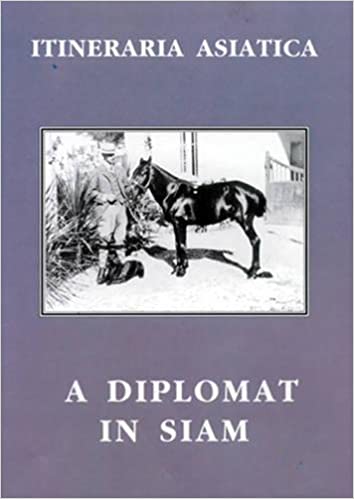
A Diplomat in Siam (introduced and edited by Nigel Brailey)
Nigel Brailey, a University of Bristol historian who is well known to students of Sir Ernest Satow, is to be congratulated on bringing out a revised edition of this work, the fruit of Satow's period as British minister-resident in Bangkok from 1885 until 1888. It is the journal which Satow, later the author of the famous Guide to Diplomatic Practice, kept on his long boat journey from Bangkok to the northern city of Chiangmai and back again, which took from the beginning of December 1885 until the end of the following February.
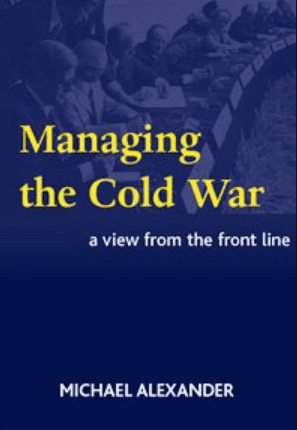
Managing the Cold War: A view from the front line
Michael Alexander, a Russian-speaking senior British diplomat who died in 2002, was a major behind-the-scenes figure in what he calls the ‘management’ of the cold war to a peaceful conclusion.

Instruzione e formazione del diplomatico: la tradizione inglese
The text discusses English traditions in diplomatic instruction and training.
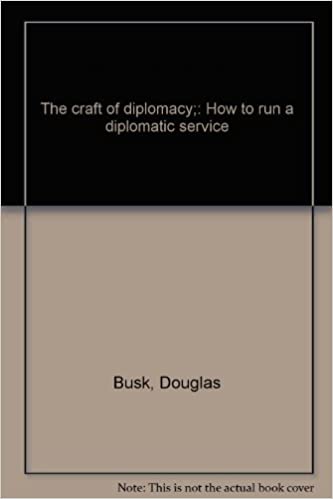
The Craft of Diplomacy: How to Run a Diplomatic Service
The text discusses the key aspects of diplomacy and how to effectively manage a diplomatic service.

The impact of the Internet on diplomatic reporting: how diplomacy training needs to be adjusted to keep pace
Over the last 20 years, the Internet has changed the ways in which we work, how we socialise and network, and how we interact with knowledge and information.
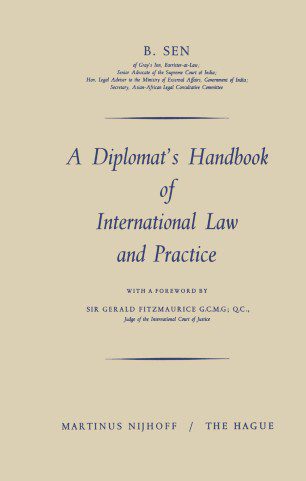
A Diplomat’s Handbook of International Law and Practice
The following text outlines guidelines for diplomats on international law and practice.
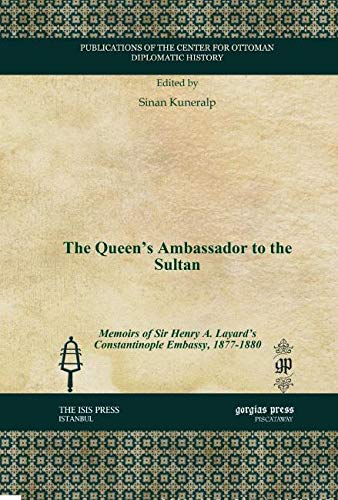
The Queen’s Ambassador to the Sultan: Memoirs of Sir Henry A. Layard’s Constantinople Embassy, 1877-1880
Once more students of Ottoman diplomatic history are in debt to the scholar-publisher, Sinan Kuneralp, for Sir Henry Layard was one of the most remarkable and controversial of British ambassadors to Turkey in the nineteenth century and served there during the Russo-Turkish War of 1877-8 – and yet the volumes of his memoirs dealing with this period have hitherto languished unpublished in the British Library, in part perhaps because of their size. (Layard admits himself to having been ‘somewhat minute, perhaps a great deal too much so’, p. 692.)They are here published almost in their entir...
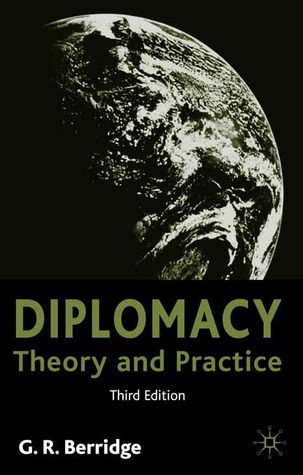
Diplomacy: Theory and Practice, 3rd edn
The text essentially discusses the concept of diplomacy, exploring both its theoretical underpinnings and practical applications. Diplomacy involves negotiation, communication, and relationship-building between different states to achieve common goals and resolve conflicts peacefully. It emphasizes the importance of understanding cultural contexts, utilizing soft power strategies, and maintaining open dialogue to navigate international relations effectively. Diplomacy is viewed as a key tool in promoting cooperation, preventing conflicts, and fostering mutual understanding among nations.
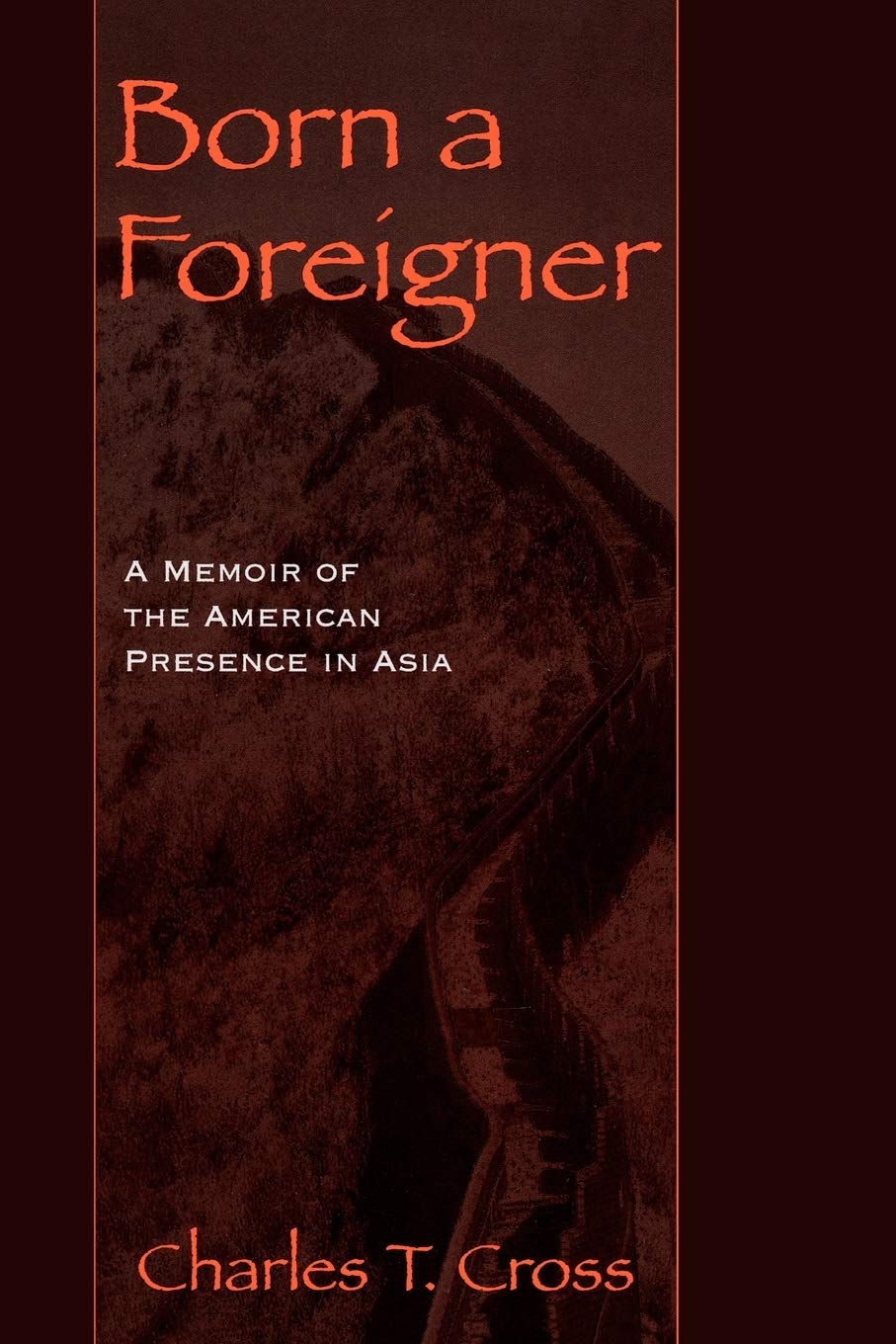
Born a Foreigner: A Memoir of the American Presence in Asia
This is the eighth volume in the ADST-DACOR Diplomats and Diplomacy Series, and is a very solid addition to it. Cross, who was born of missionary parents in Beijing, spent 32 years in the US Foreign Service, and though his tours abroad included Egypt, Cyprus and London, most were in Asia and it is on these which this memoir concentrates.

Persuasion, trust, and personal credibility
Ambassador Kishan Rana indicates the cultivation of relations and the credibility of diplomats as the basis for persuasion in diplomacy. He provides an initial taxonomy of the type of relations that diplomats should cultivate. When it comes to credibility, Ambassador Rana presents the main ways of developing and maintaining credibility in diplomatic relations. The more credible the diplomat, the more likely it is that their persuasion with local interlocutors will be successful.
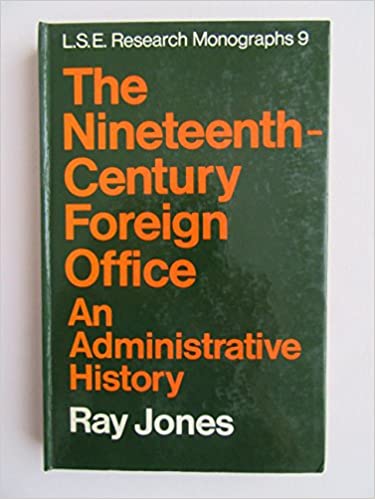
The Nineteenth Century Foreign Office
The Nineteenth Century Foreign Office discusses the evolution of foreign diplomacy during the 1800s, emphasizing the growth of Britain's diplomatic service, the influence of key diplomats and foreign secretaries, and the changing dynamics of international relations during this time period. It explores the impact of major events such as the Congress of Vienna, the Crimean War, and the development of the British Empire on the role and function of the Foreign Office. The article highlights the significant role played by diplomats and foreign secretaries in shaping British foreign policy and navig...
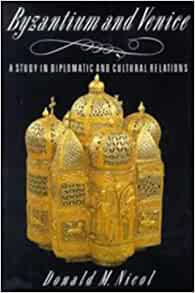
Byzantium and Venice: A study in diplomatic and cultural relations
This book traces the diplomatic, cultural and commercial links between Constantinople and Venice from the foundation of the Venetian republic to the fall of the Byzantine Empire. It aims to show how, especially after the Fourth Crusade in 1204, the Venetians came to dominate first the Genoese and thereafter the whole Byzantine economy. At the same time the author points to those important cultural and, above all, political reasons why the relationship between the two states was always inherently unstable.

Lessons from two fields
A conversation between a diplomat and an interculturalist, combining real-life examples from the diplomatic field with intercultural theory.
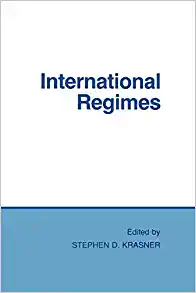
International Regimes
The text analyzes the formation, function, and effectiveness of international regimes in regulating global issues and facilitating cooperation among states.

On the manner of practising the new diplomacy
The traditional model of diplomacy, founded on the principles of national sovereignty and of statecraft, is becoming less relevant as a field of new, influential actors enter the international system.
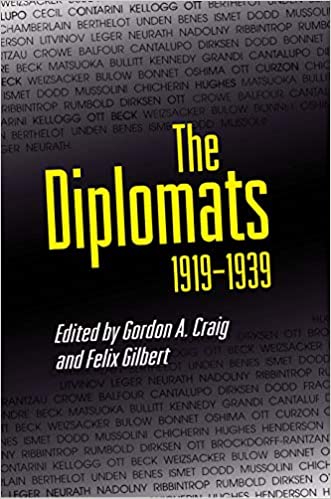
The Diplomats, 1919-1939
The message outlines the diplomatic efforts and challenges between 1919 and 1939, exploring key events and agreements during this period.

Last Man Standing: Memoirs of a political survivor
Jack Straw was the ablest and wisest of Tony Blair’s foreign secretaries and served in this capacity from 2001 until he was ungratefully dumped without warning by his leader in 2006. Afterwards he hit the headlines by courageously publishing his dislike of the full veil worn my some Muslim women, on the grounds that this was such a visible statement of separation and difference that it complicated community relations and was, in any case, a cultural preference rather than a religious obligation. (Straw was then and still is the Labour MP for a Bradford constituency with a large Muslim popula...
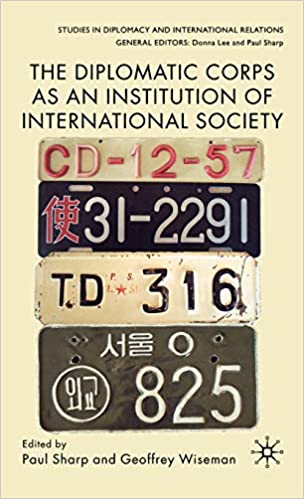
The Diplomatic Corps as an Institution of International Society
The Diplomatic Corps is an institution that plays a crucial role in international society by facilitating communication and negotiation between different countries. It serves as a bridge between nations, fostering peaceful resolutions to conflicts and promoting cooperation on global issues. Diplomats are trained professionals who represent their countries' interests abroad and work to build relationships based on mutual respect and understanding. Through their diplomatic efforts, the Diplomatic Corps helps maintain stability and promote diplomacy in the international arena.
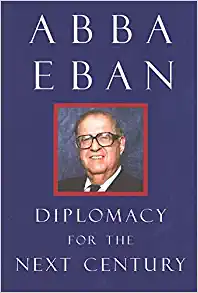
Diplomacy for the New Century
The text discusses the importance of diplomacy in the modern era, emphasizing the need for updated approaches and strategies in international relations. Diplomacy plays a crucial role in addressing global challenges and fostering cooperation among nations in the 21st century.
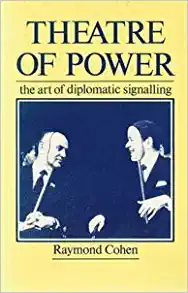
Theatre of Power: The Art of Signaling
Theatre of Power: The Art of Signaling discusses how strategic signaling plays a vital role in navigating power dynamics. Leaders can use various techniques to convey strength and influence, such as body language, attire, and other symbols. Mastering the art of signaling can help individuals assert dominance and command respect in various settings.

The origins, use and development of hot line diplomacy
The text is about the history, usage, and evolution of hot line diplomacy.

A practitioner’s view
Part of Language and Diplomacy (2001): With examples from a detailed case study of the historical New Zealand Treaty of Waitangi, Aldo Matteucci shows us that the diplomat's job is to decode language. Matteucci writes that all language comes with "hidden baggage": hidden meanings and intentions, historical and political context, legal precedents, etc. In order to find these hidden meanings the diplomat needs a broad understanding of the context of a situation.

Persuasion in sociology of diplomacy
Dr Milan Jazbec, a practitioner and researcher in diplomacy, positions a discussion on persuasion in the sociology of diplomacy. Social context determines both diplomacy and persuasion. Dr Jazbec makes a distinction between pressure and persuasion. In a rather counter-intuitive view to dominant discourse, he argues that genuine persuasion cannot be public. As soon as it becomes public, it immediately becomes pressure.
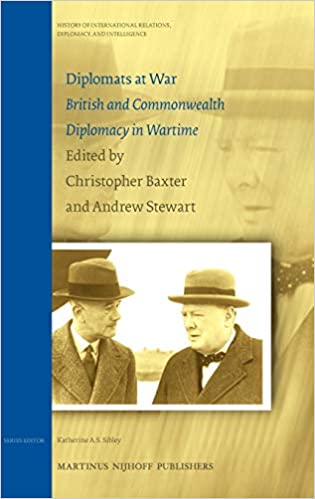
Diplomats at War: British and Commonwealth diplomacy in wartime
In their Preface, the editors of Diplomats at War say that the two world wars in the twentieth century had a “catalytic impact upon the practice of diplomacy”; among other things, they continue, this produced “an unprecedented revolution” in the way heads of mission conducted their business.

The Blair Years: Extracts from the Alastair Campbell Diaries
Reveiw by Geoff Berridge
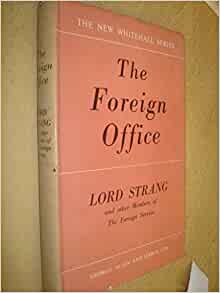
The Foreign Office
This book contains a comprehensive description of the British Foreign Office and the Foreign Service since the important Eden reforms of 1943.

Multistakeholder diplomacy at the OECD
In his paper John West outlines multistakeholder diplomacy at the OECD. West first explores the main points and facts of the OECD before going into the emergence of globalising stakeholder societies. Finally he gives his remarks on multistakeholder diplomacy at the OECD.
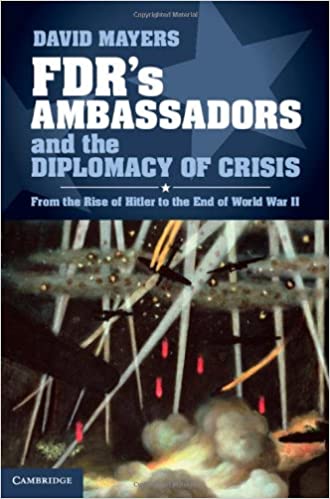
FDR’s Ambassadors and the Diplomacy of Crisis: From the rise of Hitler to the end of World War II
What effect did personality and circumstance have on US foreign policy during World War II? This incisive account of US envoys residing in the major belligerent countries – Japan, Germany, Italy, China, France, Great Britain, USSR – highlights the fascinating role played by such diplomats as Joseph Grew, William Dodd, William Bullitt, Joseph Kennedy and W. Averell Harriman. Between Hitler's 1933 ascent to power and the 1945 bombing of Nagasaki, US ambassadors sculpted formal policy – occasionally deliberately, other times inadvertently – giving shape and meaning not always intended by ...

British Diplomacy and the Descent into Chaos: The career of Jack Garnett, 1902-19
I am in favour of biographies of relatively obscure individuals like Jack Garnett because there are plenty of them on the famous; moreover, studies of this kind often turn up interesting details (including how the famous were seen from the foothills) and stimulate thought on bigger questions. John Fisher’s well written and thoroughly researched study of this early twentieth century British diplomat, into which contextual detail is expertly woven, is no exception.
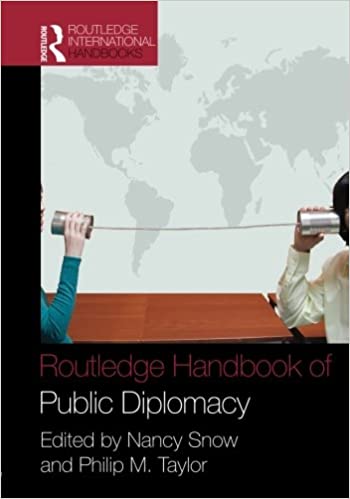
Routledge Handbook of Public Diplomacy
The Routledge Handbook of Public Diplomacy explores the field's evolution, challenges, and strategies in the modern interconnected world. It investigates the role of both state and non-state actors in shaping international relations through communication and cultural exchange, emphasizing the importance of building relationships and understanding diverse perspectives for effective public diplomacy efforts.

Diplomacy and Journalism in the Victorian era: Charles Dickens, the Roving Englishman and the “white gloved cousinocracy”
The Victorian era saw the convergence of diplomacy and journalism, with figures like Charles Dickens embodying this relationship. Dickens, known as the Roving Englishman, navigated political and social landscapes, shedding light on the "white gloved cousinocracy" of the time.
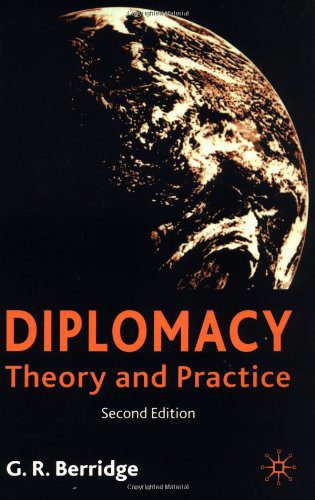
Diplomacy: Theory and Practice, 2nd edn
Diplomacy: Theory and Practice, 2nd edn" provides an in-depth exploration of the principles and application of diplomacy in international relations. It covers key concepts such as negotiation, communication, and conflict resolution, offering practical insights for diplomats and policymakers. The book emphasizes the role of diplomacy in promoting peace and cooperation among nations, making it a valuable resource for students and professionals in the field of international affairs.
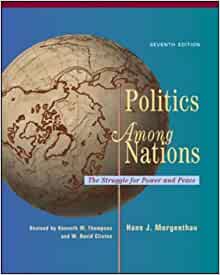
Politics Among Nations
The text "Politics Among Nations" discusses the nature of international relations, emphasizing the importance of power and national interests in shaping diplomatic interactions. It explores the role of diplomacy and military endeavors in maintaining stability and resolving conflicts on a global scale. "Politics Among Nations" delves into the complexities of state behavior and strategic decision-making within the framework of the international system.
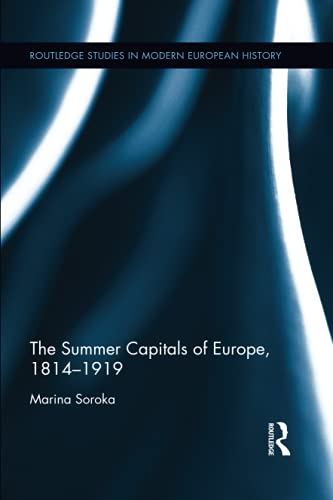
The Summer Capitals of Europe, 1814-1919
This is an original work, meticulously researched, rich in detail, and written in a clear and – here and there – refreshingly pungent style. Soroka is a Russian scholar but at ease in English.

Diplomatic Education
Diplomatic Education’ was published as Chapter 11 in: An Anthology Celebrating the Twentieth Anniversary of the Higher Colleges of Technology, ed. Tayeb A Kamali, (HCT Press, UAE, 2007).
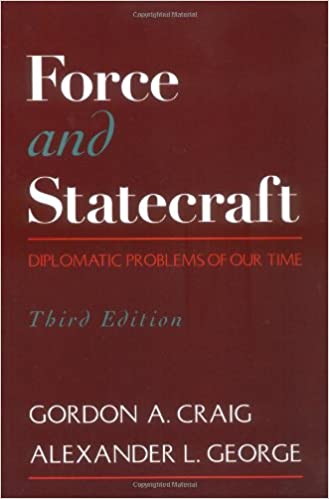
Force and Statecraft: Diplomatic Problems of Our Time
In this classic text, an eminent historian of international affairs and a distinguished political scientist survey the evolution of the international system, from the emergence of the modern state in the 17th century to the present. Craig and George pay particular attention to the nineteenth century's "balance-of-power" system, the basic tenets of which still determine many applications of modern diplomacy. The authors also focus on the ways in which the 20th century diplomatic revolution--a complex of military, political, economic and ideological factors--has destroyed the homogeneity of th...
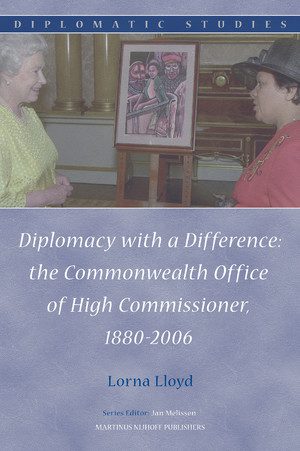
Diplomacy with a Difference: The Commonwealth Office of High Commissioner, 1880-2006
Book review by Geoff Berridge
The latest from Diplo and GIP
Tailor your subscription to your interests, from updates on the dynamic world of digital diplomacy to the latest trends in AI.
Subscribe to more Diplo and Geneva Internet Platform newsletters!
Diplo: Effective and inclusive diplomacy
Diplo is a non-profit foundation established by the governments of Malta and Switzerland. Diplo works to increase the role of small and developing states, and to improve global governance and international policy development.


